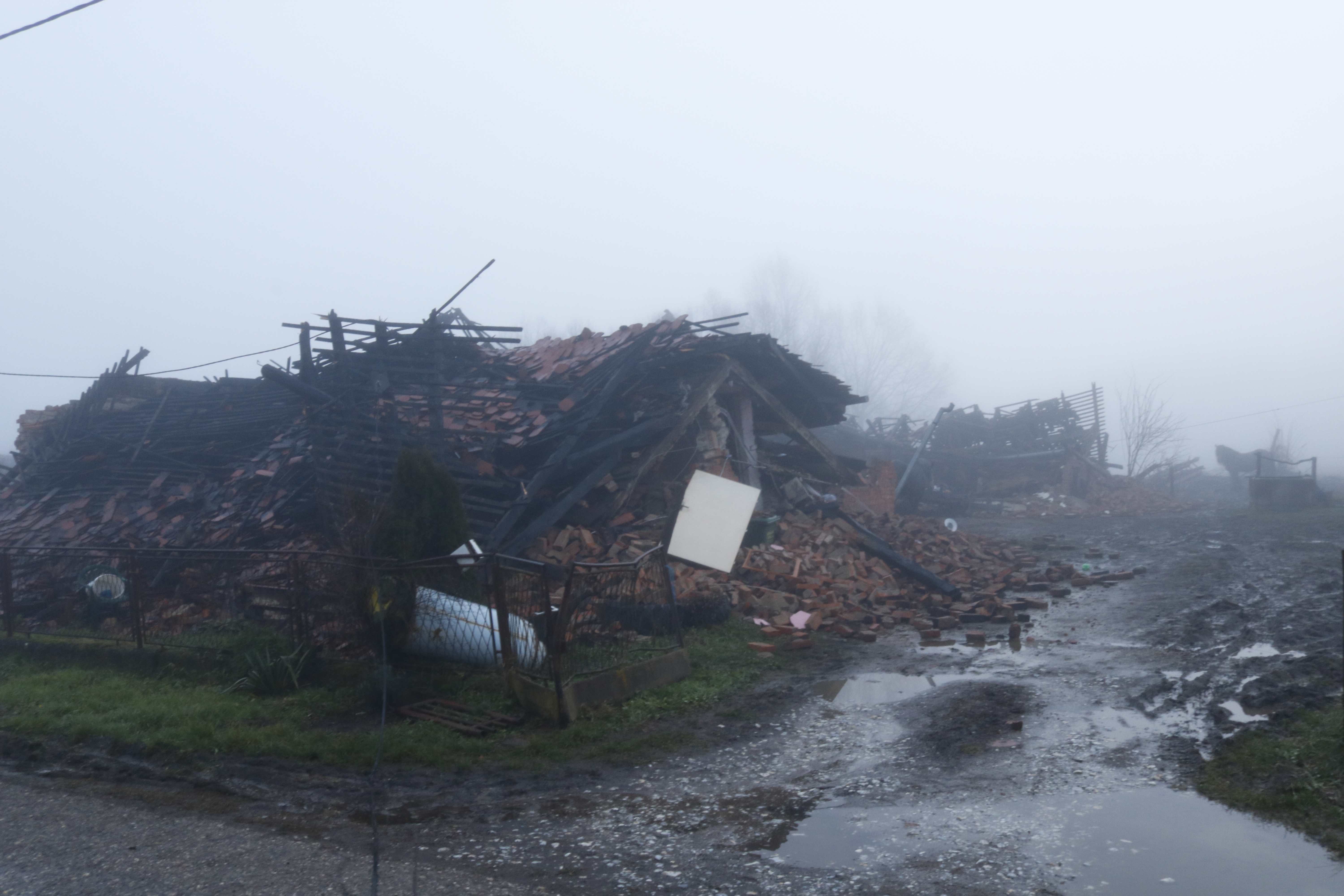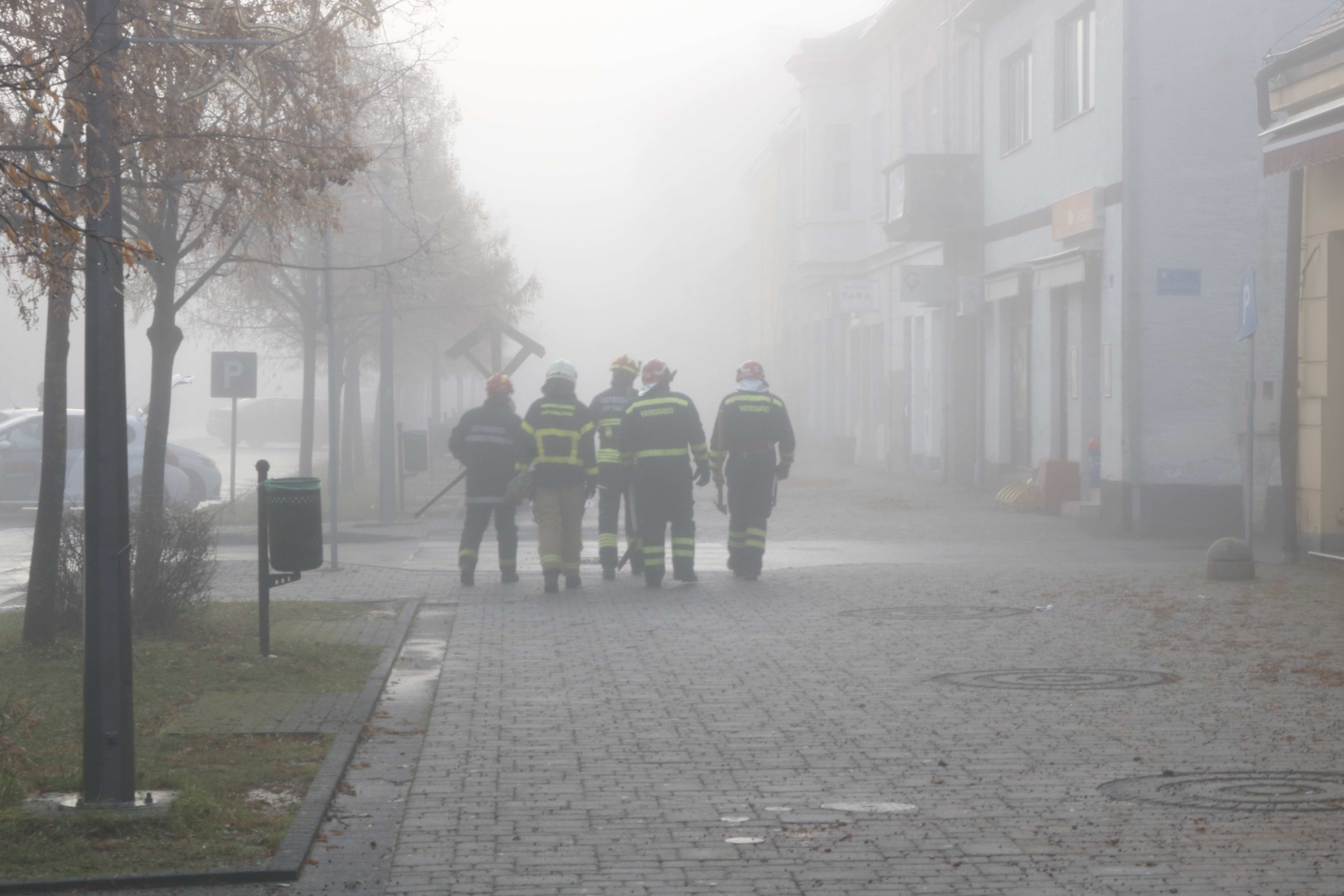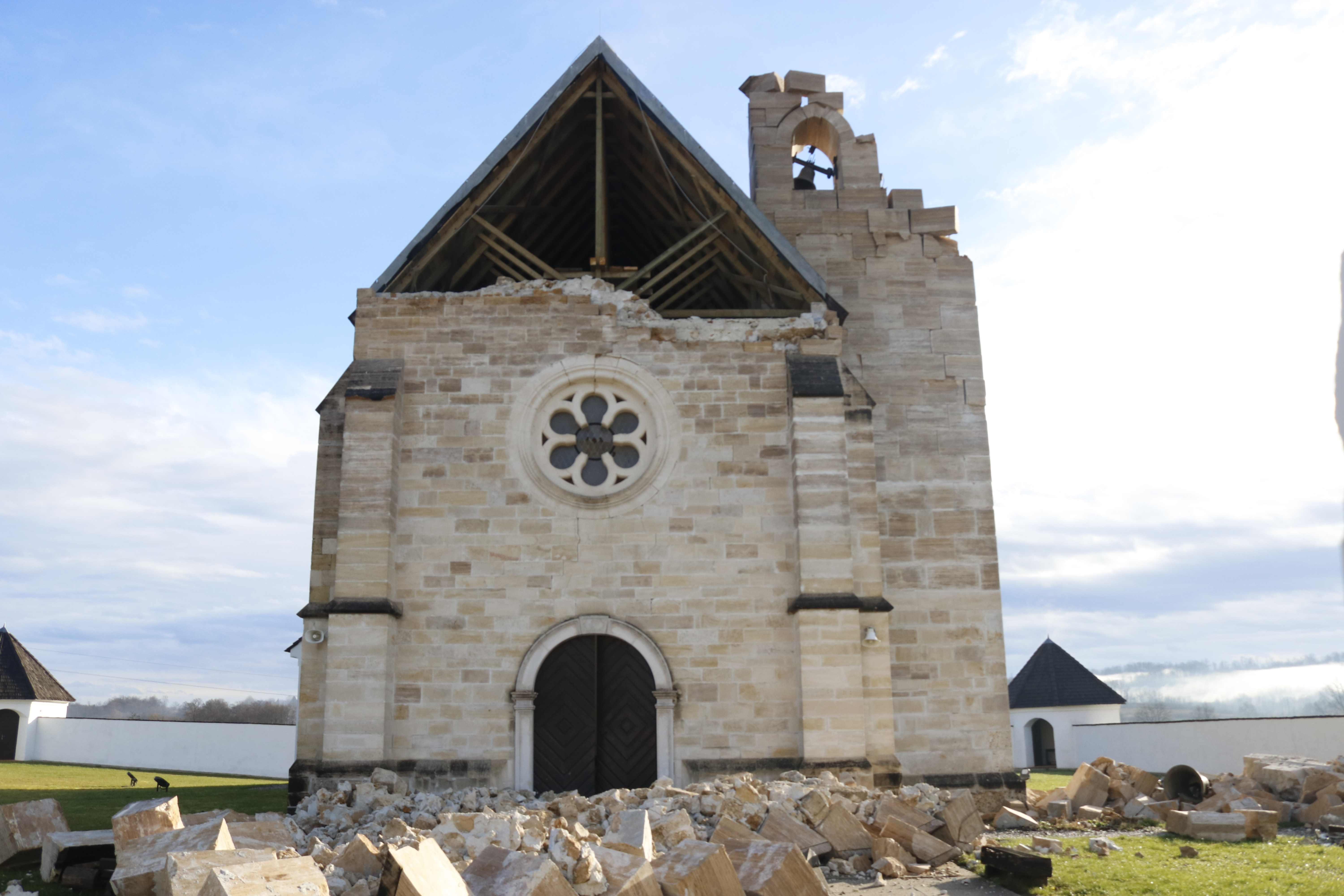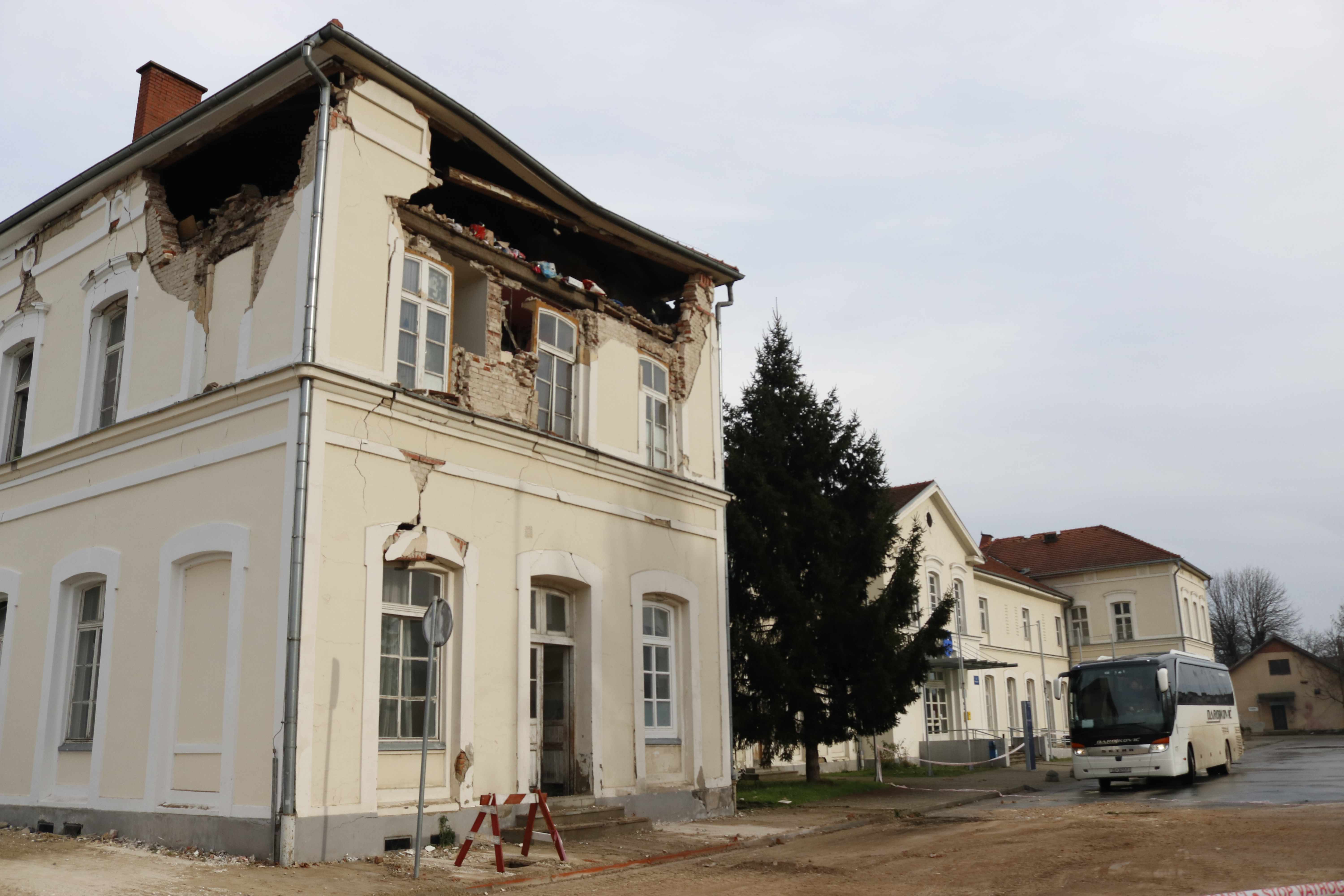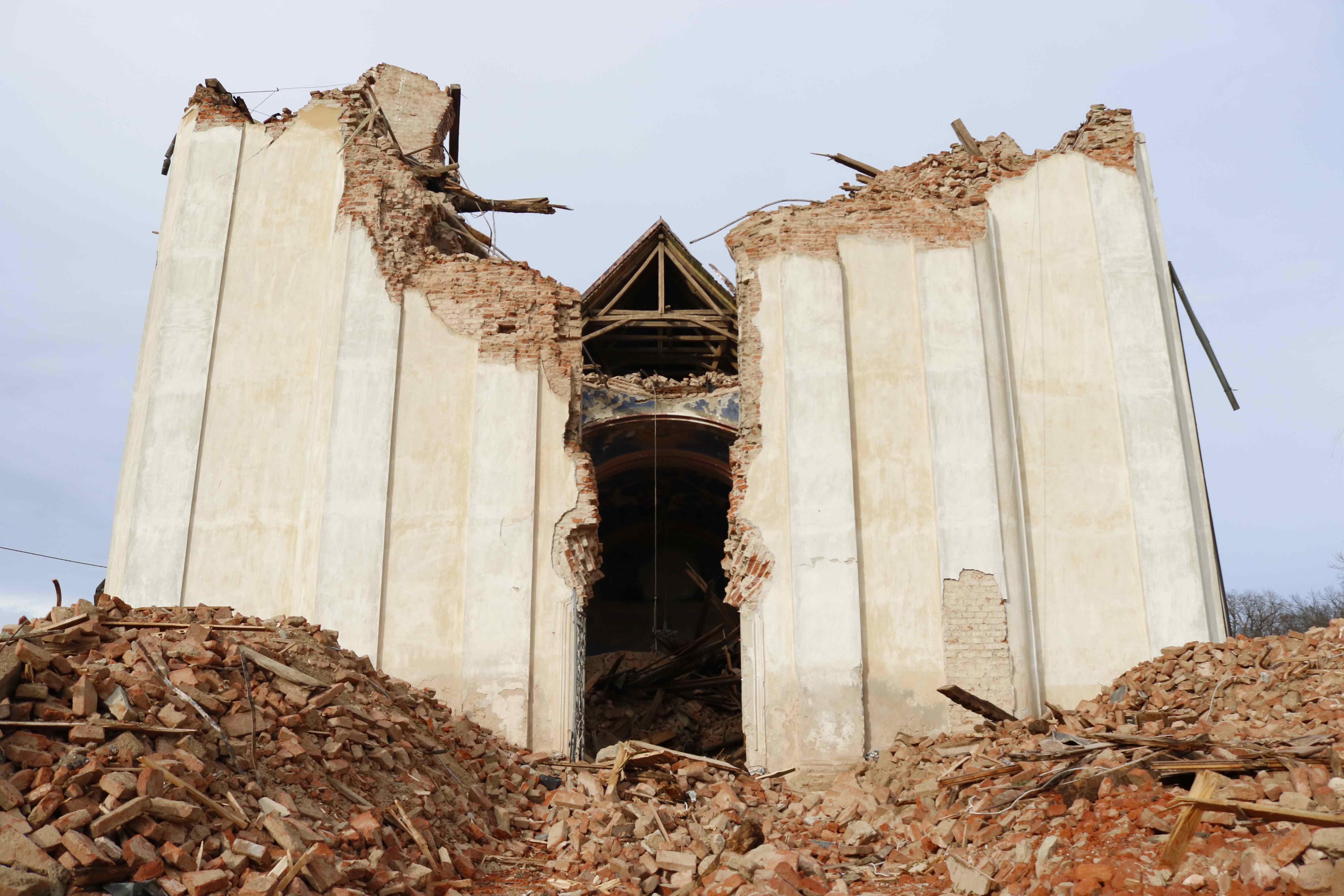Red Cross Gives Quake Victims 129 t of Food, 50,000 l of Water, 21,000 Hot Meals
ZAGREB, 2 January, 2021 - The Croatian Red Cross (HCK) said on Saturday that over the past three days they had distributed more than 129 tonnes of food in earthquake-hit areas as well as 50,000 litres of water and 21,000 hot meals.
They have also provided 172 heaters, 650 blankets, 39 generators, 700 packets of food and necessities for children as well as ensuring psychosocial support for 1,600 people.
The HCK has also opened two more locations in Petrinja for the accommodation of the people affected, including a service for tracing the missing and psychosocial support.
By 1 January, HRK 36.4 million was donated by physical and legal entities to help those affected by Tuesday's earthquake. Donations are still being collected. A donor line has received 69,169 calls bringing HRK 432,300.
(€1 = HRK 7.5)
Petrinja Area Hit by 374 Tremors, Including 109 in Past Two Days
ZAGREB, 2 January, 2021 - The Petrinja area has been hit by 374 tremors since 28 December, including 109 over the past two days, the Zagreb Faculty of Science Department of Geophysics said on Saturday.
The first earthquake was registered at 6.28 a.m. on 28 December, measuring 5 on the Richter scale.
The strongest one struck Petrinja, Glina and Sisak at 12.19 p.m. on 29 December, measuring 6.2.
By 31 December, the area was hit by 265 tremors with magnitudes above 1 on the Richter scale.
Sixty-nine tremors were registered on 1 January and another 40 by 2 p.m. today.
Health Minister for Reorganising, Adapting to New Circumstances After Quake
ZAGREB, 2 January, 2021 - Health Minister Vili Beros said on Saturday the ministry's task was to reorganise healthcare in the wider area hit by Tuesday's devastating earthquake, adding that it was necessary to adjust to the new circumstances and transfer patients to hospitals in Zagreb to "receive the adequate assistance."
Speaking to the press while visiting the Sisak General Hospital, which sustained extensive damage, Beros thanked its staff for receiving 32 patients and conducting over 90 checkups since the tremor.
Petrinja hospital temporarily unusable
The minister said "unfortunately... the building of the hospital in Petrinja is temporarily unusable and can't be made functional quickly in any way."
He said enough rapid antigen tests for coronavirus had arrived in the quake-struck area. "Over 1,500 vaccine doses have been ensured. Given that new doses are arriving on a weekly basis, it's certain that we will adapt to the new conditions and that as many doses as necessary will be reallocated for this county."
Beros said he did not expect everyone there to be vaccinated but that he would appeal that as many people as possible did to prevent the epidemic from spreading. He added that it took three to four weeks to acquire immunity, underlining the importance of vaccinating people as soon as possible.
Emergency medical aid containers set up
The minister said containers for emergency medical aid were set up in Petrinja because the local hospital was demolished.
"We are adapting to the circumstances. The ministry has instructed all health centres and family doctors to adapt to the new circumstances," he said, adding that medicines would be delivered to people with chronic diseases who lost their homes.
The director of the Petrinja hospital, Tomislav Dujmenovic, asked the contractors building a new hospital building to resume their work as soon as possible, saying the new building would solve all their problems.
Mayor Says PM Reassured Him That More Money Would be Awarded to Petrinja
ZAGREB, 2 January, 2021 - The mayor of Petrinja, Darinko Dumbovic, said on Saturday that Prime Minister Andrej Plenkovic had reassured him that there would be more money earmarked for this city which sustained extensive damage in the 29 December quake.
Dumbovic's latest statement ensued after he earlier said that he would not take the allocation for Petrinja in the amount of 30 million kuna, claiming that that relief was being distributed along party lines.
"We are human beings, we are not a stone. We must also react emotionally," Dumbovic, an official of the Reformists party, said adding that he had talked with Prime Minister Plenkovic in the meantime.
I have made it clear to the premier that we must have stronger communication, the mayor said.
FM Thanks Int'l Community, Expats for Swift Quake Relief
ZAGREB, 2 January, 2021- Foreign Minister Gordan Grlic Radman on Saturday thanked the international community and Croatian emigrants for swiftly sending relief to those affected by a 6.2 earthquake in Sisak-Moslavina County, saying the government would not forget anyone affected.
Visiting the area struck on Tuesday, he told press in Lekenik the government was "pleasantly surprised" by the swift response of the international community and Croatian emigrants.
The government immediately requested the activation of the EU Civil Protection Mechanism, and more than half the member states responded in 24 hours, ready to help, said Grlic Radman.
Austria sent containers, Greece was the first to send a plane with 19 tonnes of relief, and Bulgaria and Poland have sent relief too, he said, adding that yesterday he spoke with colleagues from Europe, the Middle East, Asia and North America.
"They wanted to know what the situation was, if more assistance was necessary. They have shown great solidarity and empathy for our tragedy."
European Commission President Ursula von der Leyen immediately called the prime minister and all Croatian ministers were in contact with their EU colleagues, Grlic Radman said.
He especially thanked Croatian emigrants from Australia, America and Germany for responding swiftly and starting to collect aid, saying that reminded him of how it was in the 1990s Homeland War.
Commenting on Petrinja Mayor Darinko Dumbovic's dissatisfaction with the allocation of state funds after the tremor, Grlic Radman said "one should not politicise with millions."
Dumbovic said he would return the government's HRK 30 million in aid because political affiliation was being considered, rather than people and the damage.
"The government set aside that money to show at the beginning the desire, the will for the first rehabilitation to be carried out," he said, adding that "naturally" the government would see "what else is necessary."
Grlic Radman said the Interior Ministry had a well-established civil protection mechanism that was activated immediately. He pledged that all the relief necessary, from camp beds and lamps to containers and caravans, would continue to reach those affected by the tremor.
He underlined that the government would not leave anyone on their own, saying that all Croatian citizens must have a roof over their heads and heating.
"We are all here to help these people, to ease their pain. We can't bring back lives but we can help to reduce the pain, that people feel they are supported, that they are not alone, that they have not been abandoned, that they get a roof over their heads. In any case, we are there for them."
Wreath Laid, Candles Lit for Seven Killed in Earthquake
ZAGREB, 2 January, 2021 - On Saturday, a national day of mourning for the seven killed in Tuesday's devastating earthquake, Petrinja Mayor Darinko Dumbovic and associates laid a wreath and lit candles where 13-year-old Laura Cvijic was killed.
Dumbovic recalled that dozens of people were injured in the 6.2 tremor.
The government on Thursday proclaimed January 2 a day of mourning. Besides the girl killed in the town of Petrinja, five people were killed in the village of Majske Poljane and an organist in a church in the village of Zazina.
According to current estimates, more than 2,000 buildings have been damaged. The centre of Petrinja sustained the biggest damage. Many people in Petrinja, Sisak, Glina and nearby villages have lost their homes. The earthquake has also caused damage in Zagreb and Krapina-Zagorje counties as well as in the City of Zagreb. A magnitude 5.0 foreshock with the epicentre near Petrinja on Monday has caused damage as well.
Relief convoys arriving from everywhere
Access to Petrinja today has almost been jammed due to relief convoys arriving from everywhere, including from abroad. Construction crews are still cleaning up the effects of the tremors, while dozens of construction engineers are inspecting buildings. Famous Croatian chefs are helping too by preparing thousands of meals a day.
Official: Croatian Red Cross Has Collected €4.8m in Donations for Quake Victims
ZAGREB, 2 January, 2021 - The Croatian Red Cross executive president said on Friday that this charity had to date collected HRK 36 million in donations for people who were left without their home in the 29 December devastating quake which struck the towns of Petrinja, Sisak, Glina and other parts of Sisak-Moslavina County.
We continue receiving donations, the executive president Robert Markt told the Nova TV commercial broadcaster on Friday evening.
Asked why some people whose houses were damaged had not yet received containers or mobile homes to sleep in, Markt explained that the quake-hit area covered over 1,000 square kilometres and 305 settlements and this dispersion of settlements could be a reason.
He said that currently, there was no need for new volunteers but in the coming days they would need fresh force.
"This is the operation that will last long and I would like all interested to apply in a few days, we will include them in the operation."
"We all can be proud of our Civil Protection services, and our system of Homeland Protection," said Markt in his comment on what has been done in the first 72 hours since the devastating quake.
Croatia-Shaped Cloud Appeared in the Sky Above Sisak After Quake
January 2, 2021 – Shortly after the terrible earthquake that hit the area of Sisak-Moslavina County, the sky above Sisak sent a symbolic message – a beautiful cloud that looks like Croatia on the map appeared above the city!
In the moments of the terrible earthquake that hit Sisak, Petrinja, and surrounding places on Tuesday, which damaged over 2000 houses, an unusual cloud appeared in the sky above Sisak. Few people managed even to notice it, but one child realized – the cloud is in the shape of Croatia on the map. His sister hurriedly captured the moment – she took a photo of the symbolic cloud, which was later shared across social media.
Their mother, Antonija Kmetović, first posted the photo on her Facebook profile. She explained to Jutarnji list how they survived the earthquake and how the significant photo was created.
"We were in the apartment during the earthquake. Everything was breaking, moving, shaking, thundering. The four of us were falling over. We clung to the door frame and begged it to stop. It seemed like an eternity. When it stopped, collapsed closets clogged our hallway. We barely got out, barefoot, hugging, and crying. I left my mobile phone to my children and ran to the apartment to get jackets and shoes. They were standing in front of the building with their neighbors while my husband was removing the closets so that we could walk through the buried hallway," Antonija describes the horror moments they survived in the quake.
"My son saw strange clouds. He is studying geography, so he is interested in maps and longitudes and latitudes. So my daughter immediately photographed the sky. There is no filter or editing. Pure gratitude that we are alive and that we managed to escape outside, that it stopped shaking," says Antonija.
Shortly after the earthquake, she posted a beautiful photo of a cloud in the shape of Croatia on her Facebook profile with the description "God, save Croatia." Their apartment cracked after the devastating earthquake, but she and her family are okay. They are happy that nothing happened to them.
"The apartment cracked, but I think we were fortunate that the building was well built, even though it is over 60 years old. When I see what happened to others, this is happiness to heaven," concludes Antonija.
For more on the Petrinja earthquake, follow our dedicated section.
Interview: HGSS Croatian Mountain Rescue Service in Petrinja
December 31, 2020 – Croatian firemen, army, police and medical workers worked through after the earthquake in Sisak Moslavina County on 29 December 2020. We wanted to get a sense of the demand on and the experiences of emergency services, so we spoke with Josip Granić. Head Of Service for HGSS, who was coordinating the efforts of the Croatian Mountain Rescue Service in Petrinja
This interview took place in Petrinja, just before 12.30pm on Wednesday 30 December 2020
Right now we have around 120 people here. Last night we sent some home. During the height of the operation, we had 192 members of the Croatian Mountain Rescue Service in Petrinja and the surrounding towns and villages. Firefighters and police from all over Croatia came. There are more than 200 army personnel here too.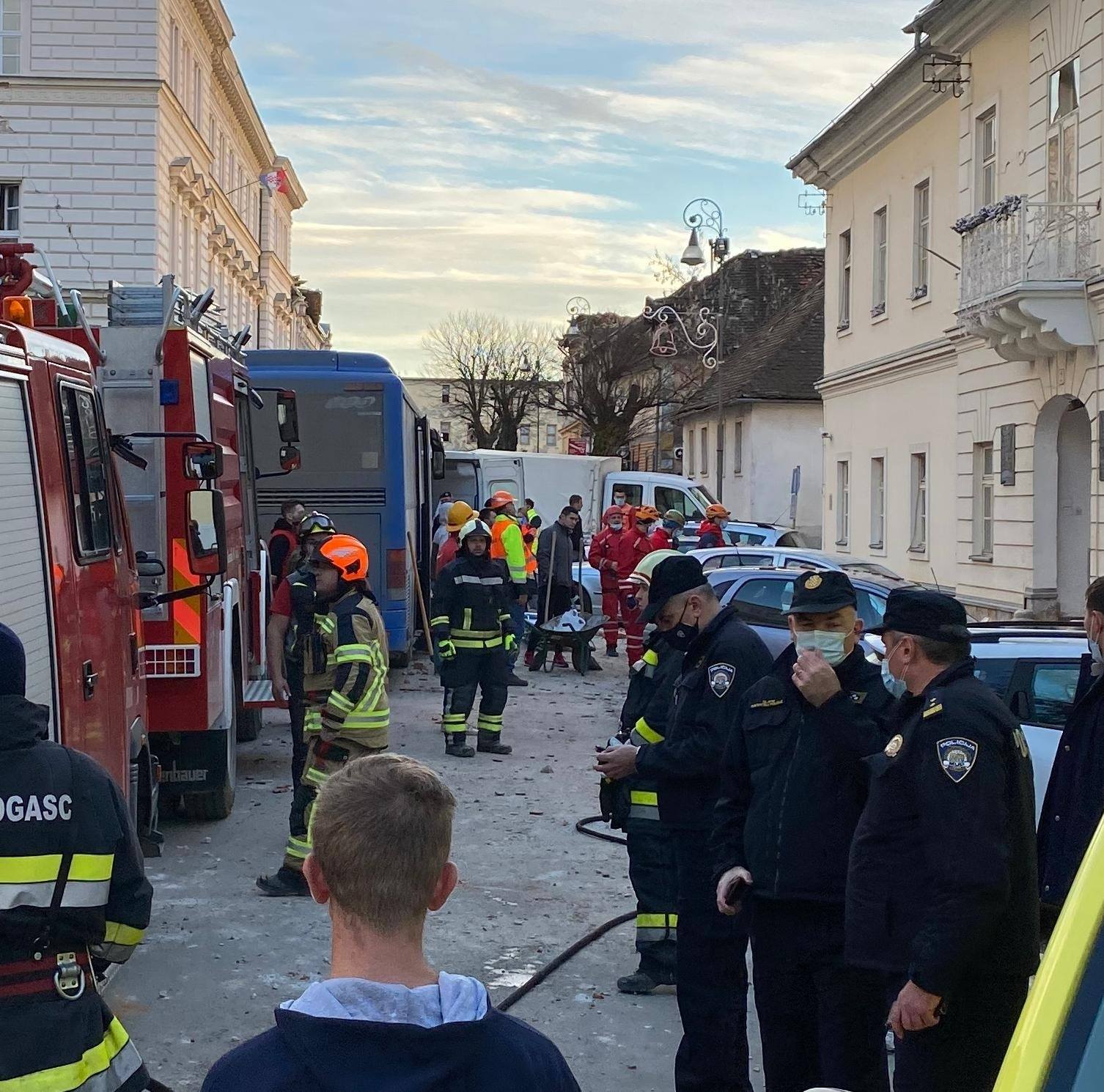
Because we are part of the operational team of the National Civil Protection, we were already here and involved in the response to the first earthquake. After yesterday's earthquake, I called each HGSS station across Croatia and asked them to prepare at least one vehicle and one team to come and join the Croatian Mountain Rescue Service in Petrinja. The first extra teams to arrive were from this county - Sisak and Novska. They got here around 2pm. Teams from Orebic, Peljesac and Split arrived maybe last, because of the large distance they had to travel. One team came by car, another came by helicopter.
What was the situation like for Croatian Mountain Rescue Service in Petrinja when the wider team first started to arrive after the second day's larger earthquake?
If I said it was chaos, that wouldn't be strong enough a word. The centre of the town was chaos. Everyone was busying themselves with responding – people were moving debris, firefighters were making their way through, ambulances and police moving through, people of the city in the streets helping out. The streets were filled with dust and smoke. You could hear the sounds of floors and roofs and buildings collapsing all around you.
What were the first undertakings for the Croatian Mountain Rescue Service in Petrinja?
Well, our first response was not only in Petrinja – we were immediately in some of the surrounding villages too. The very first thing we did was send in our search teams and the specially trained dogs we work with. We were instructed by locals. They told us which of the collapsed buildings were likely to have people trapped beneath them. We immediately found one person. It was in the town hall. One lady. The entire ceiling had fallen on top of her. Our colleague from Ogulin found her with his dog. The firefighters worked so fast, so hard to dig her out. They were excellent. It took four and a half hours to get her out. She was lucky. Unfortunately, we also found four more people who were already dead.
We saw quite a lot of volunteers. Who is organising them?
There are many different groups. Many local people were the first ones out on the streets, volunteering. Then, those from the immediate area came - four friends in a car, that kind of thing. |NGOs arrived next – veterans, charities and so on. Then, football fans from all over Croatia arrived. Supporters groups had organised coaches to bring themselves here. At first, nobody was organising them and it was a bit of a problem. They organised themselves. But, it was such chaos that some emergency vehicles, including search and rescue teams of Croatian Mountain Rescue Service in Petrinja, could not pass through the town. This is dangerous because, in search and rescue, your ability to respond quickly is vitally important. After dark, things began to run more smoothly. Many worked until 3am or 4am, then they were sent home. The ones who didn't arrive until much later in the night were incorporated into Civil Protection and assigned to work the next day in villages and towns outside Petrinja, where help was needed.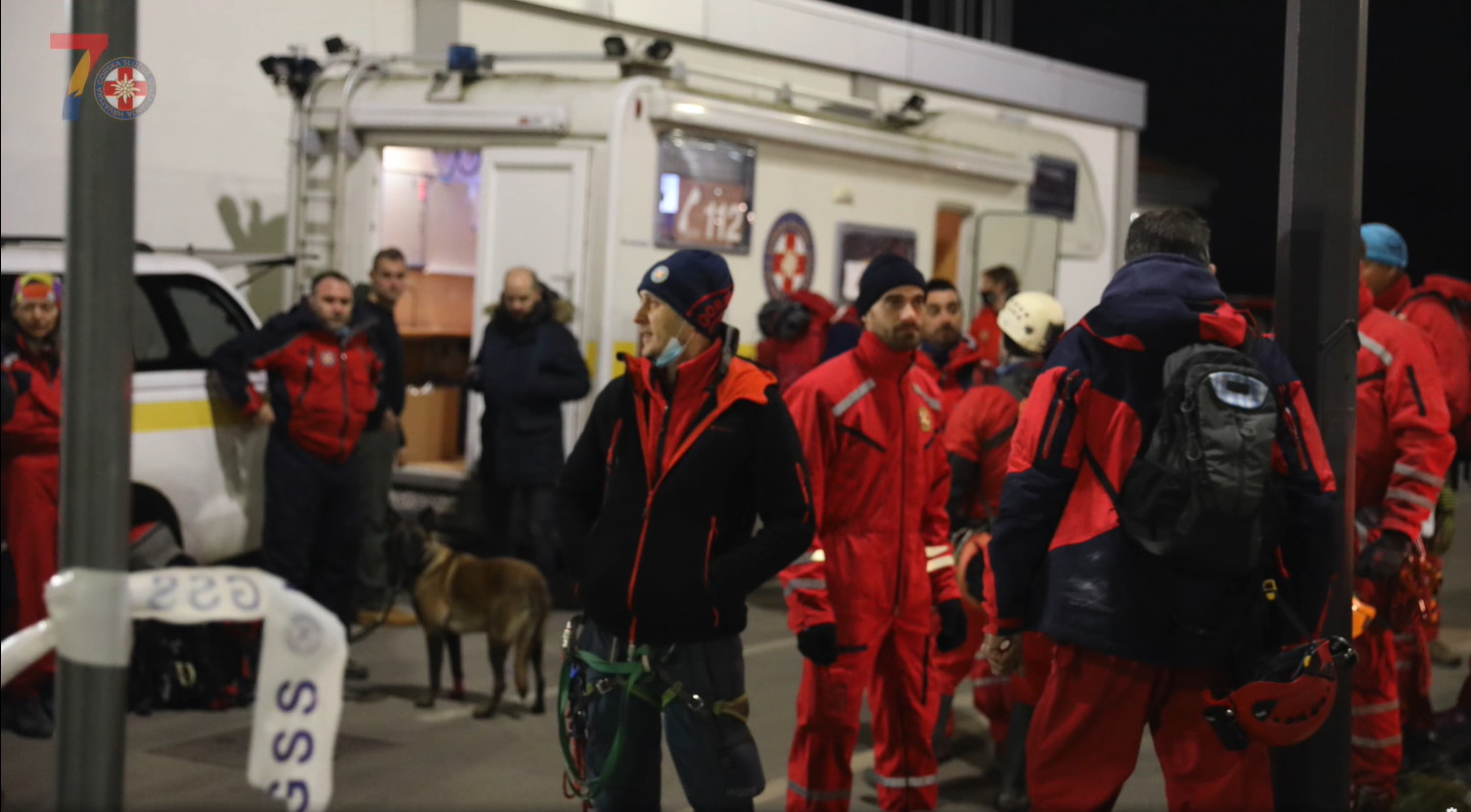
How has the demand on what you do changed since yesterday?
It hasn't changed that much. We have been visiting villages throughout the county as quickly as we can, searching for people who may be trapped. Some of these places have not yet been reached by the other emergency services, but they will get to them. We found another alive person who was trapped today. Since early in the morning we have searched 84 villages.
What advice would you give someone who wants to come here to volunteer?
Organise it first with Civil protection. If it is organised with them, then you know you won't be in the way and you will be going to where help is needed. If it's organised with them first, then come. There's a job for everyone who wants it here.
How different is the demand on emergency services in this earthquake compared to the earthquake in Zagreb in March 2020?
Well, our services were not requested during the Zagreb earthquake and a lot of that is because of the structural integrity of the buildings in Zagreb. Most were strong enough to survive that big earthquake. The ones which were damaged were only partially damaged. Many buildings in Zagreb were hardly damaged at all and so many people in Zagreb were relatively unaffected by that earthquake. Here, everyone is affected.
All images © HGSS
PHOTOS: Majske Poljane, Glina and Petrinja One Day After The Earthquake
December 31, 2020 – Total Croatia News visited Majske Poljane, Glina and Petrinja one day after the earthquake. It is difficult to find words to describe the devastation we saw. Perhaps pictures tell the story better
Majske Poljane

Majske Poljane is a rural community. Such was the devastation here, it was difficult to tell which of the destroyed buildings had yesterday been used for agriculture or if they'd been homes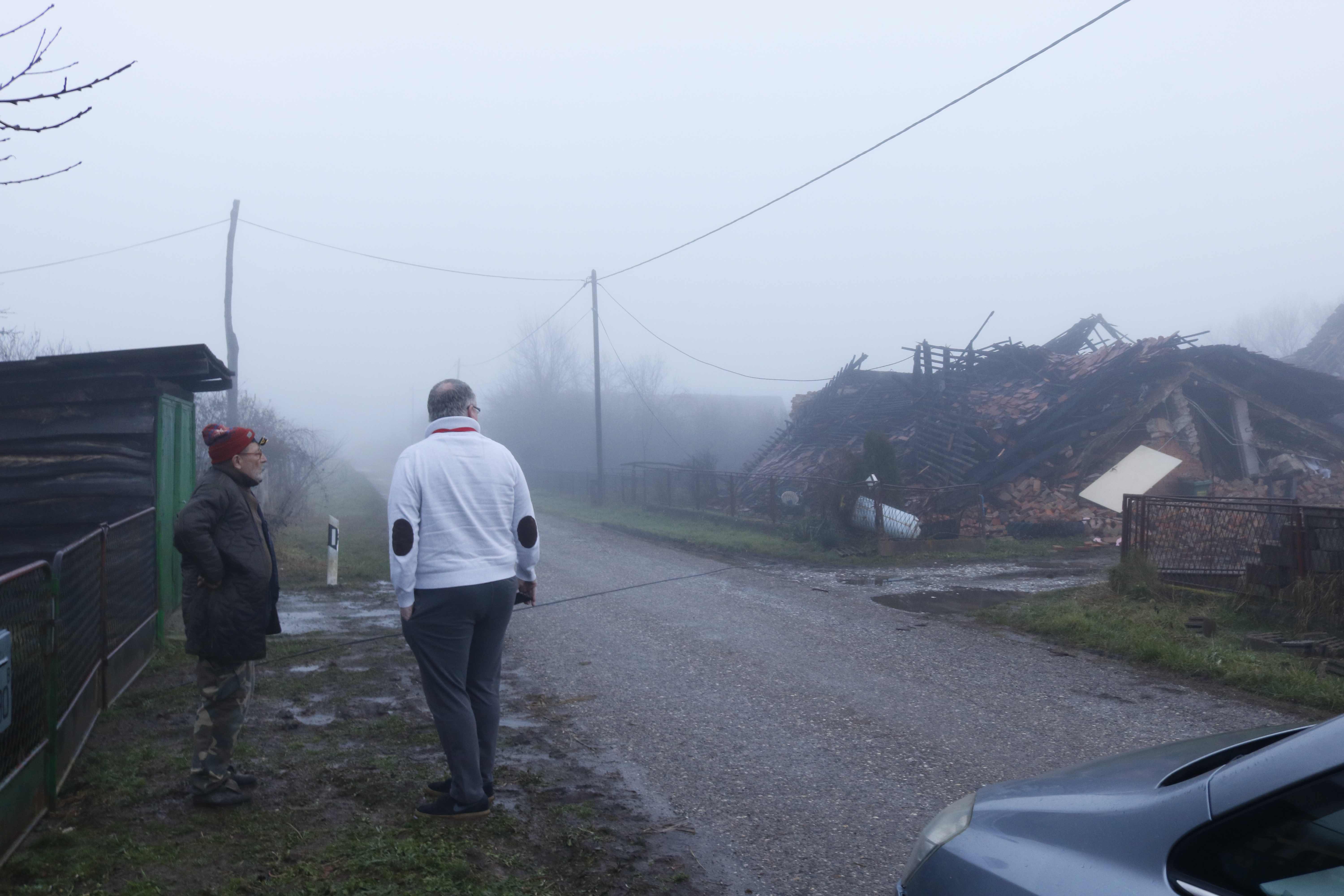
TCN's Paul Bradbury talks to Majske Poljane resident Vladimir who confirmed that, yes, the building across the lane had been a home, his neighbours had lived there just 24 hours earlier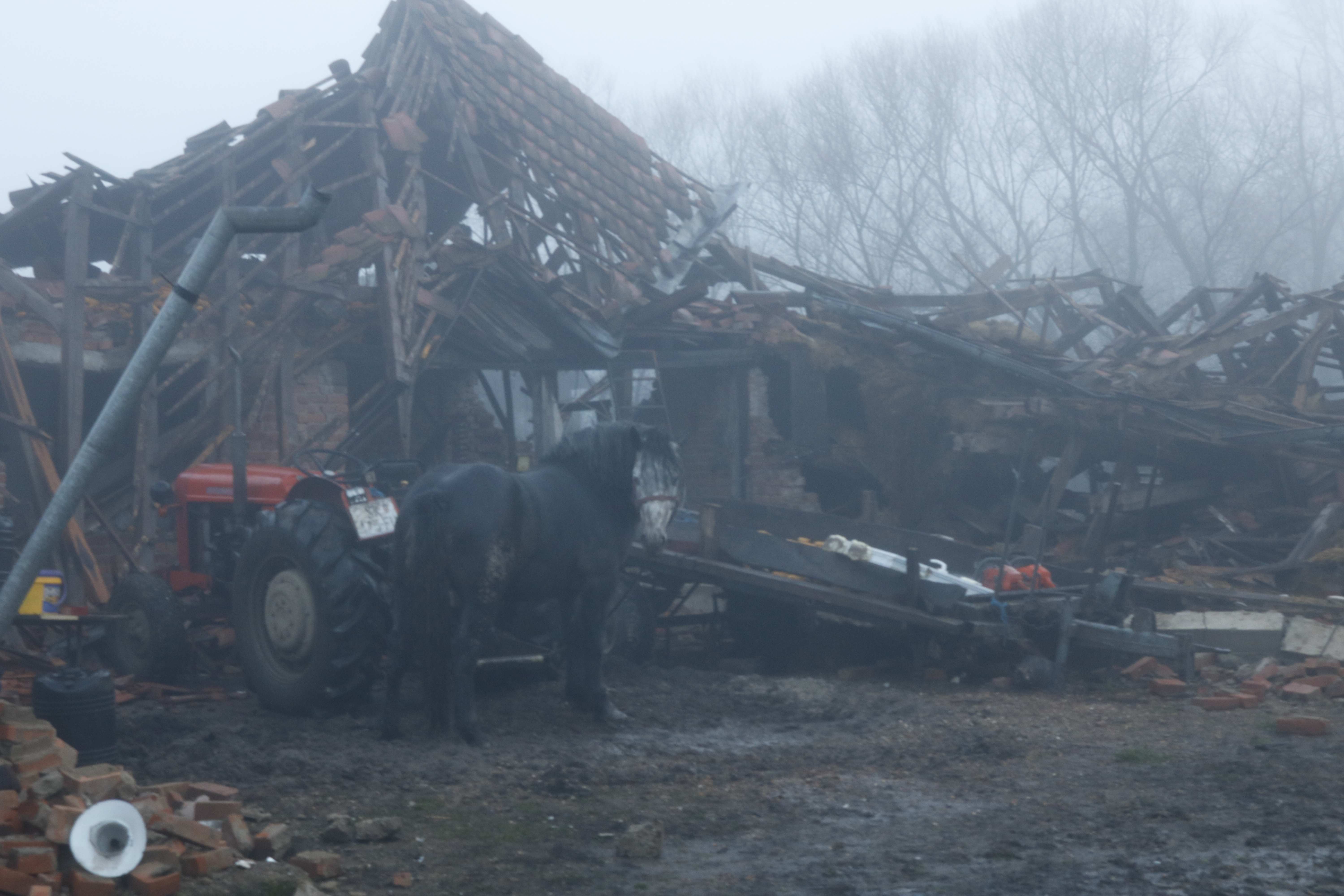
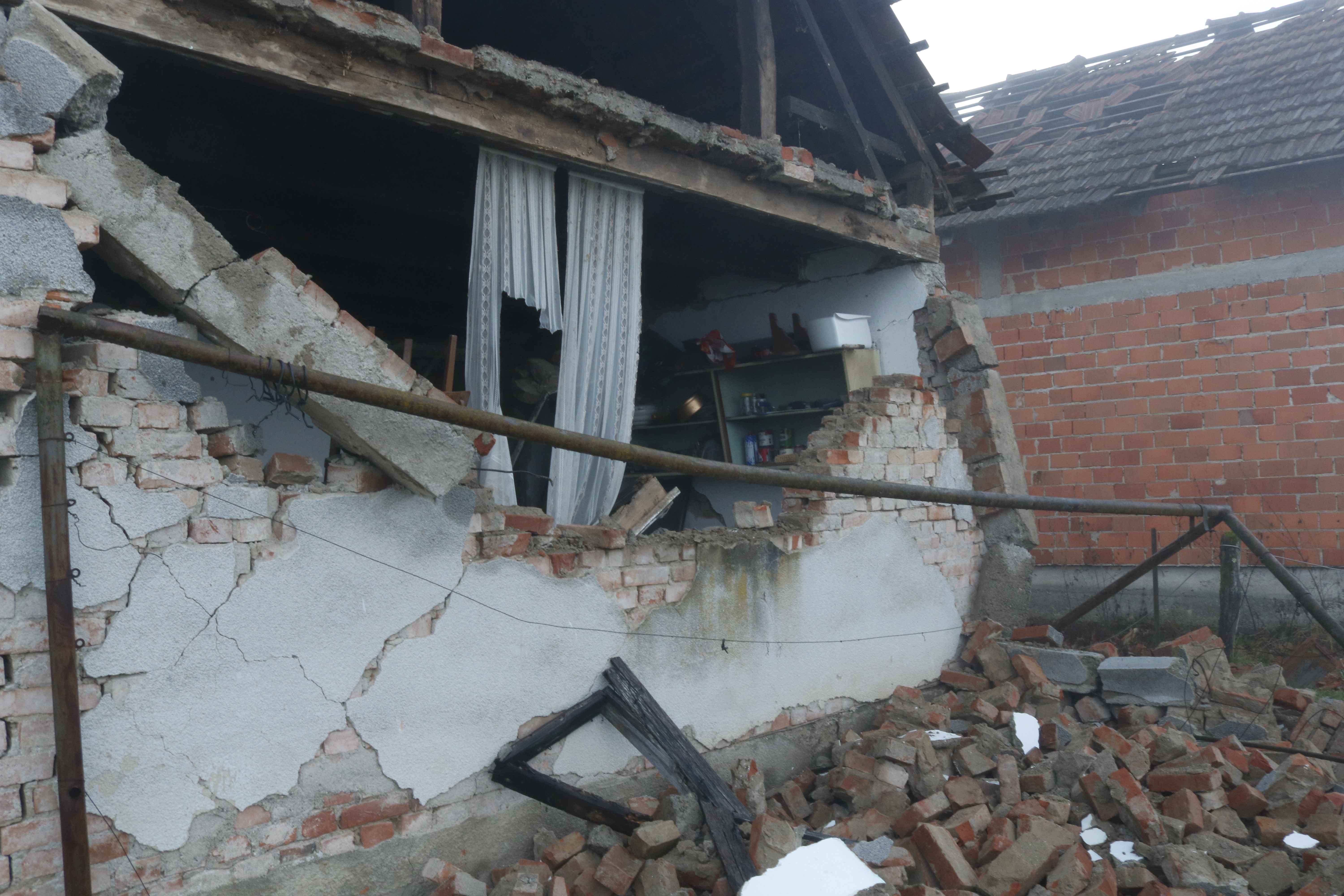
Doors of houses left ajar, windows collapsed, smashed and broken. Inside, you can see everyday lives, stopped suddenly, frozen in time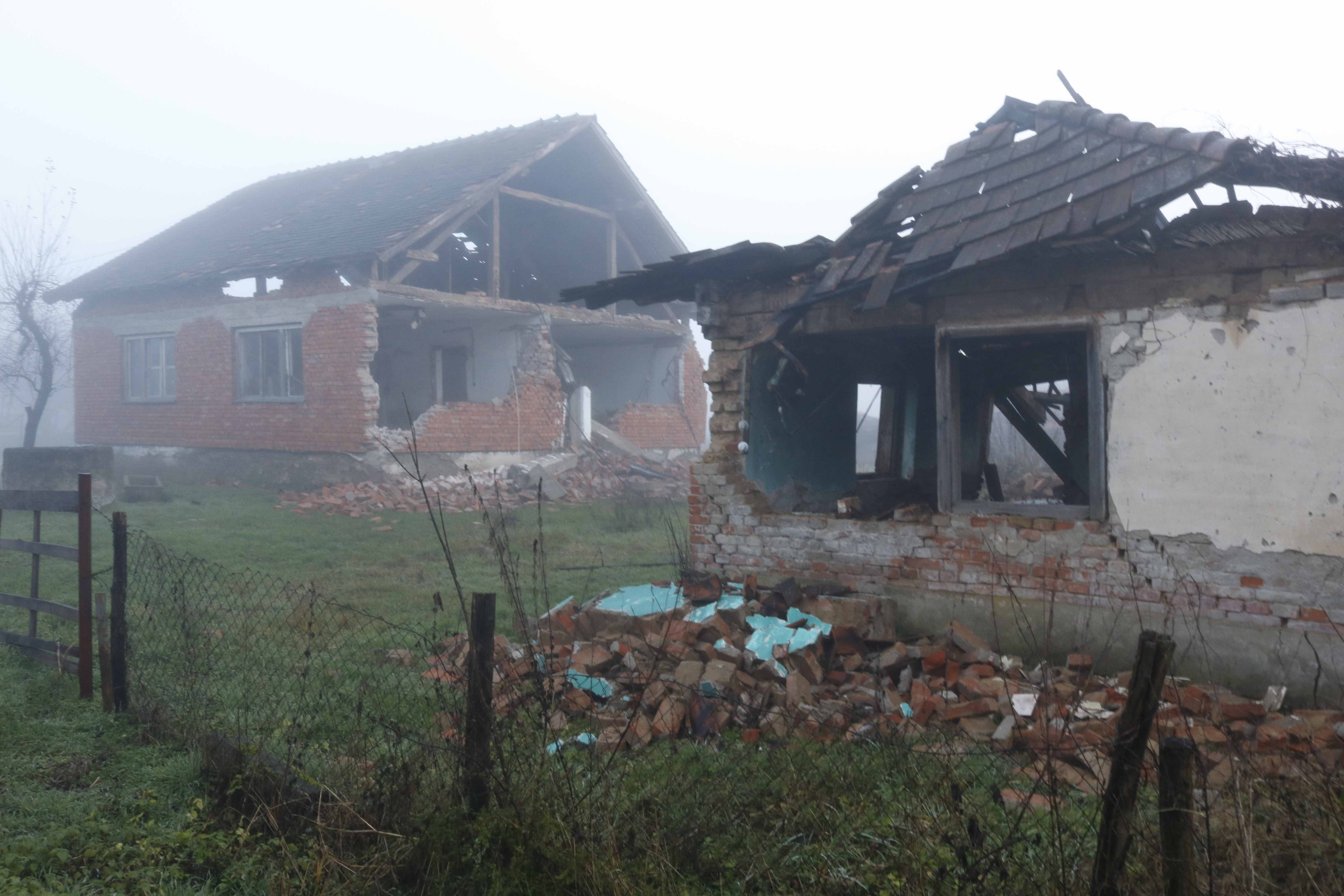
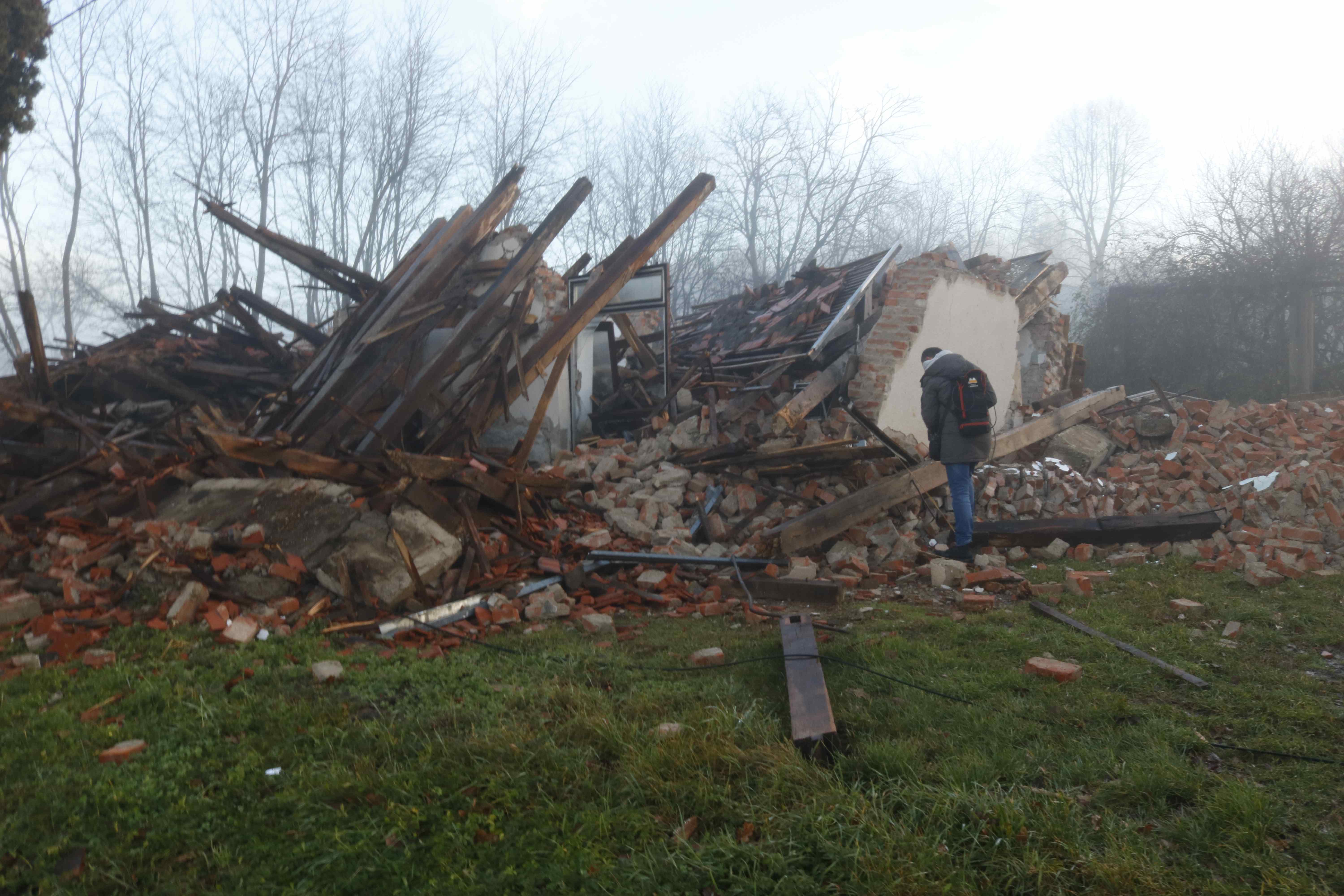
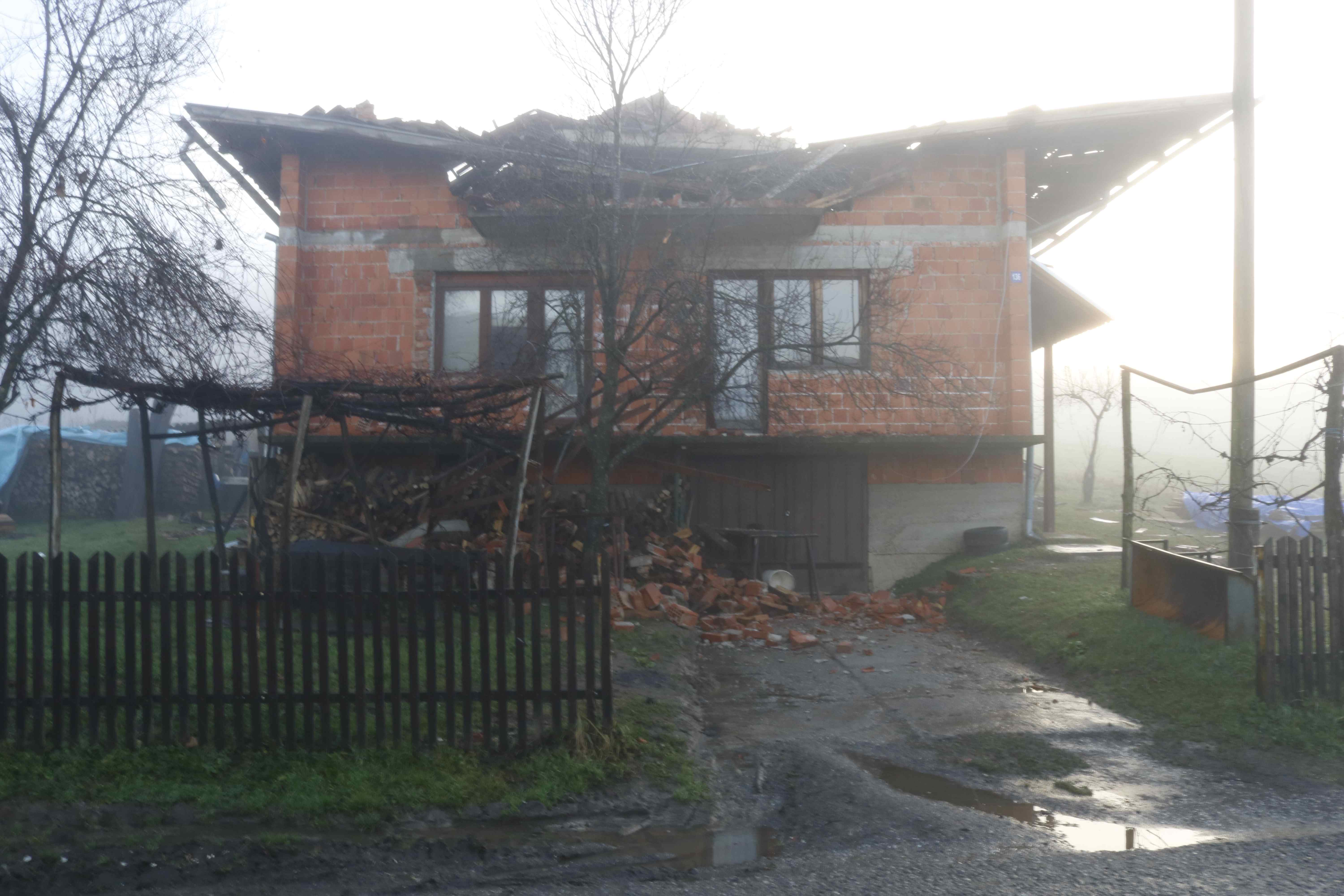
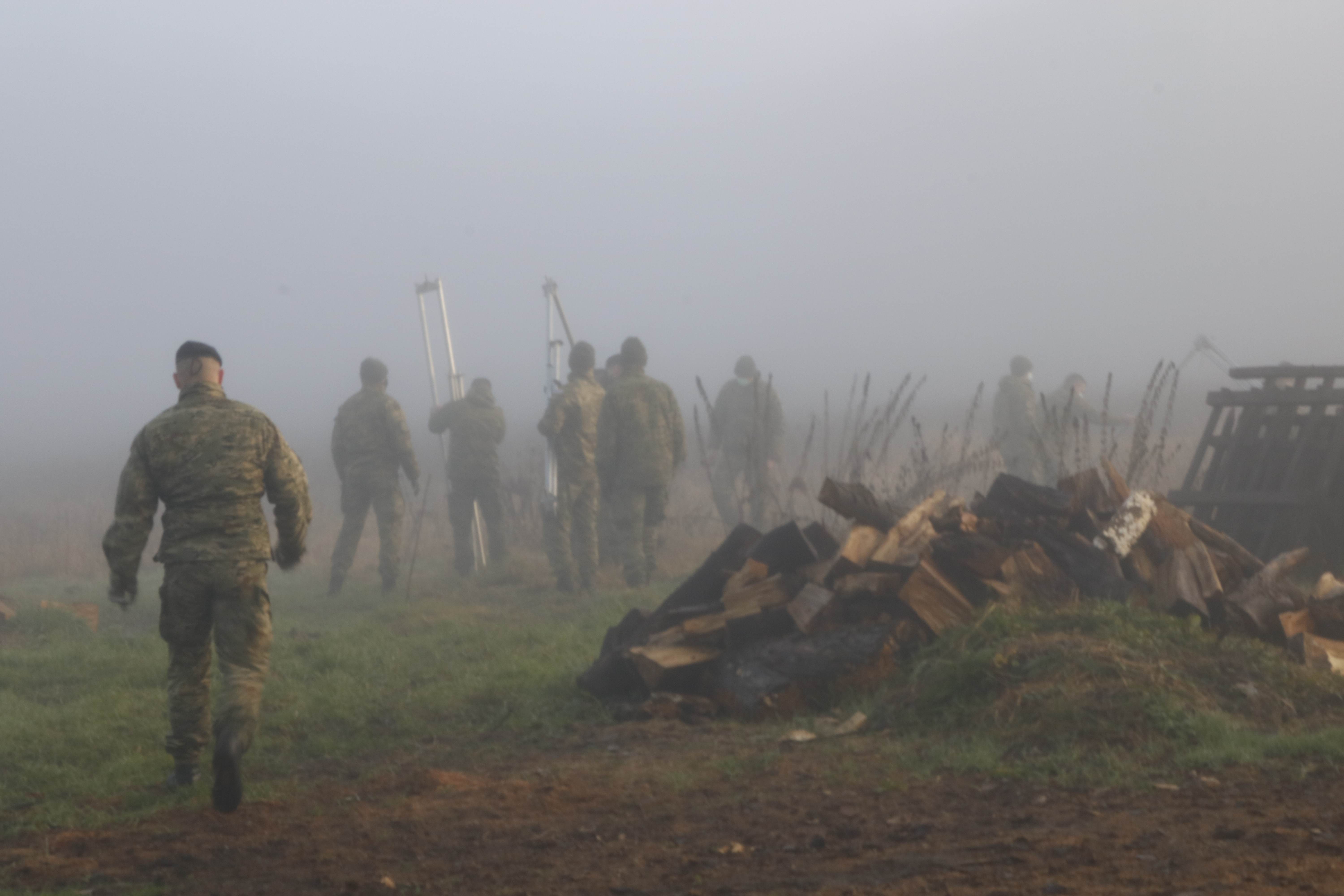
Croatian soldiers quickly constructing emergency shelters in the freezing fog of early morning. They came from all over Croatia. Unsure if their damaged houses were structurally safe, parents and children of Glina, surrounding villages and Petrinja stood in gardens and fields, keeping warm around fires. With no electricity, they cooked on barbecues.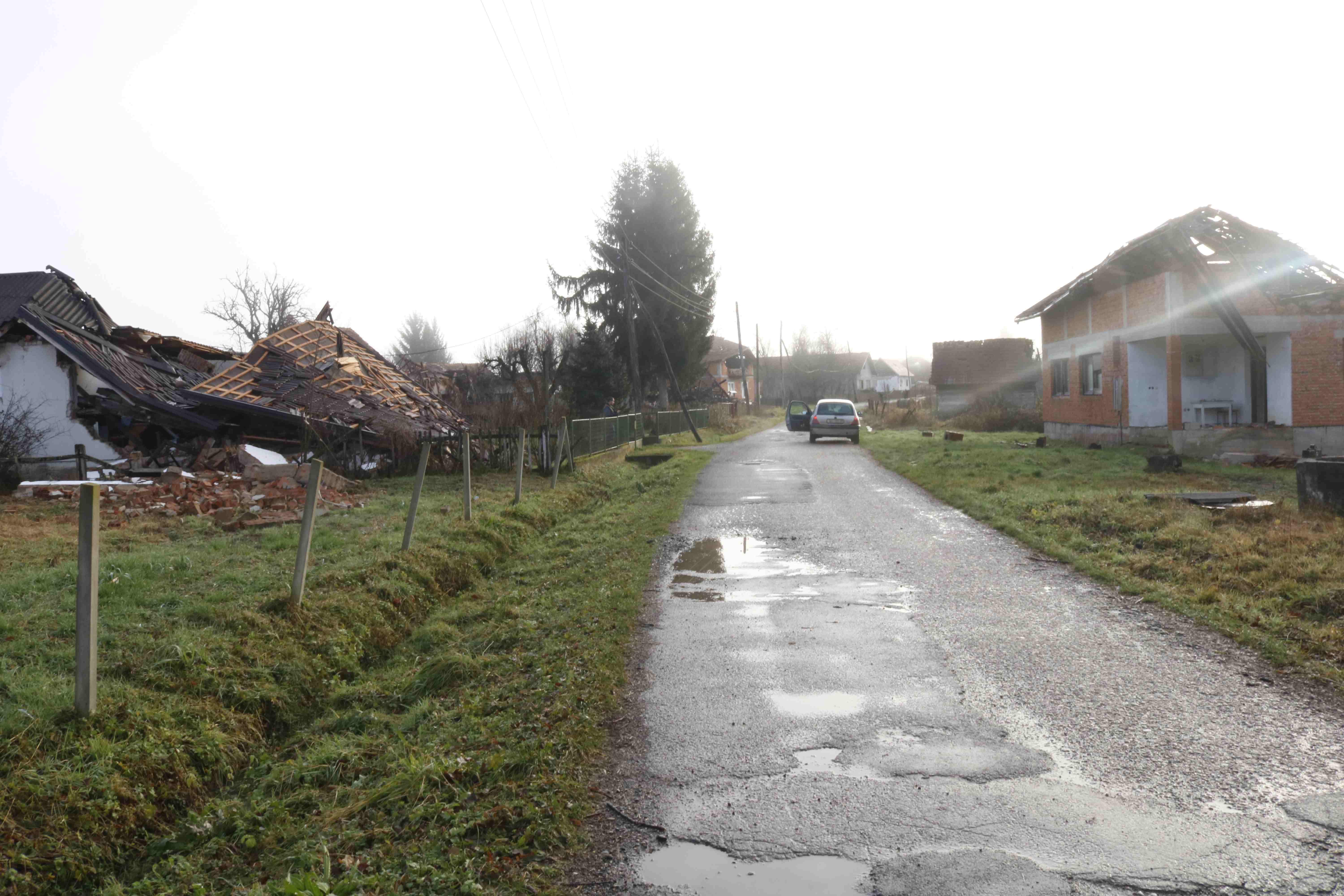
Majske Poljane seemed like the most silent place on earth. No single sound, not even bird song.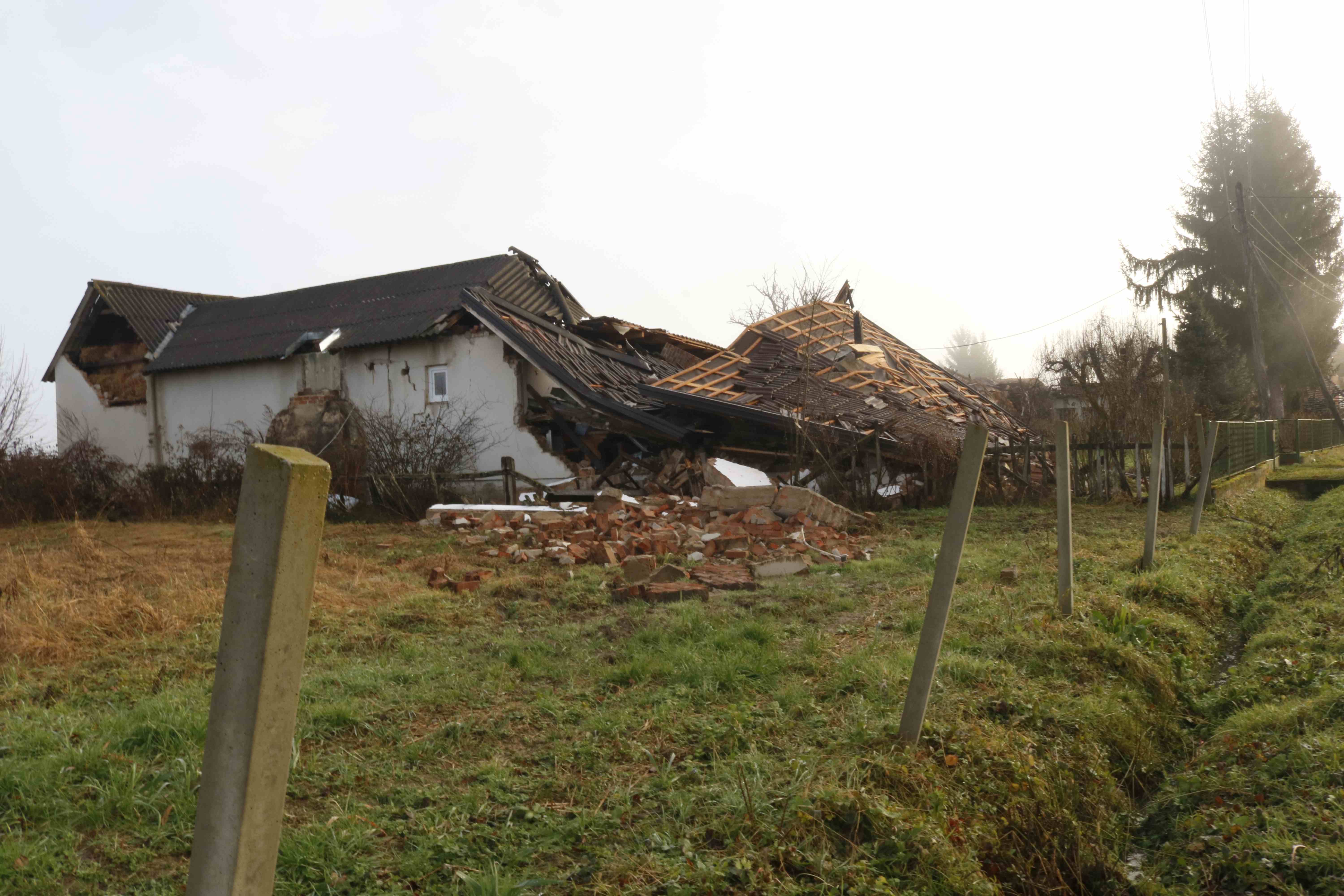
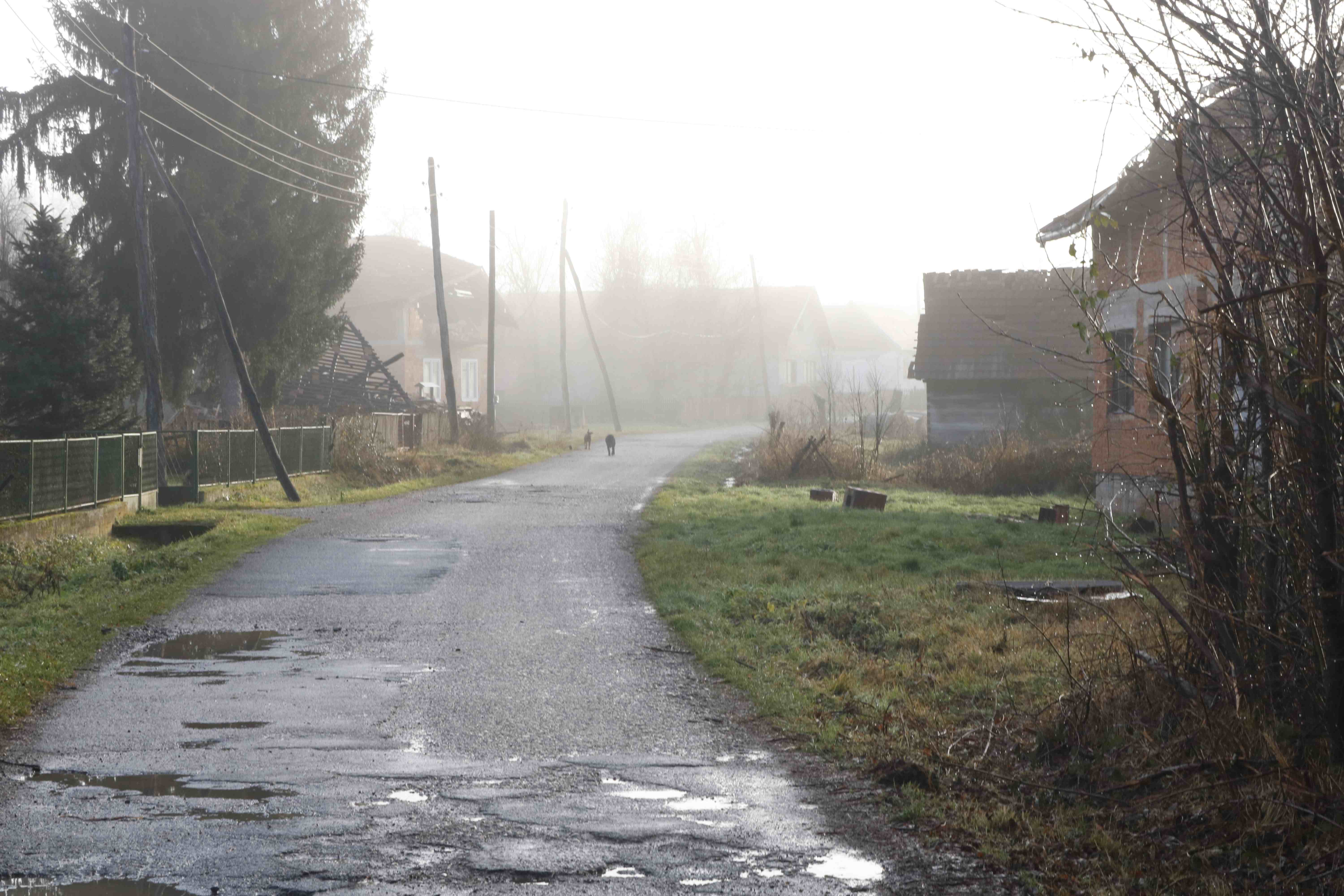
Even the three village dogs left behind padded around the wet road in silence
Glina

Croatian firefighters walk heavily through the mist-filled streets of Glina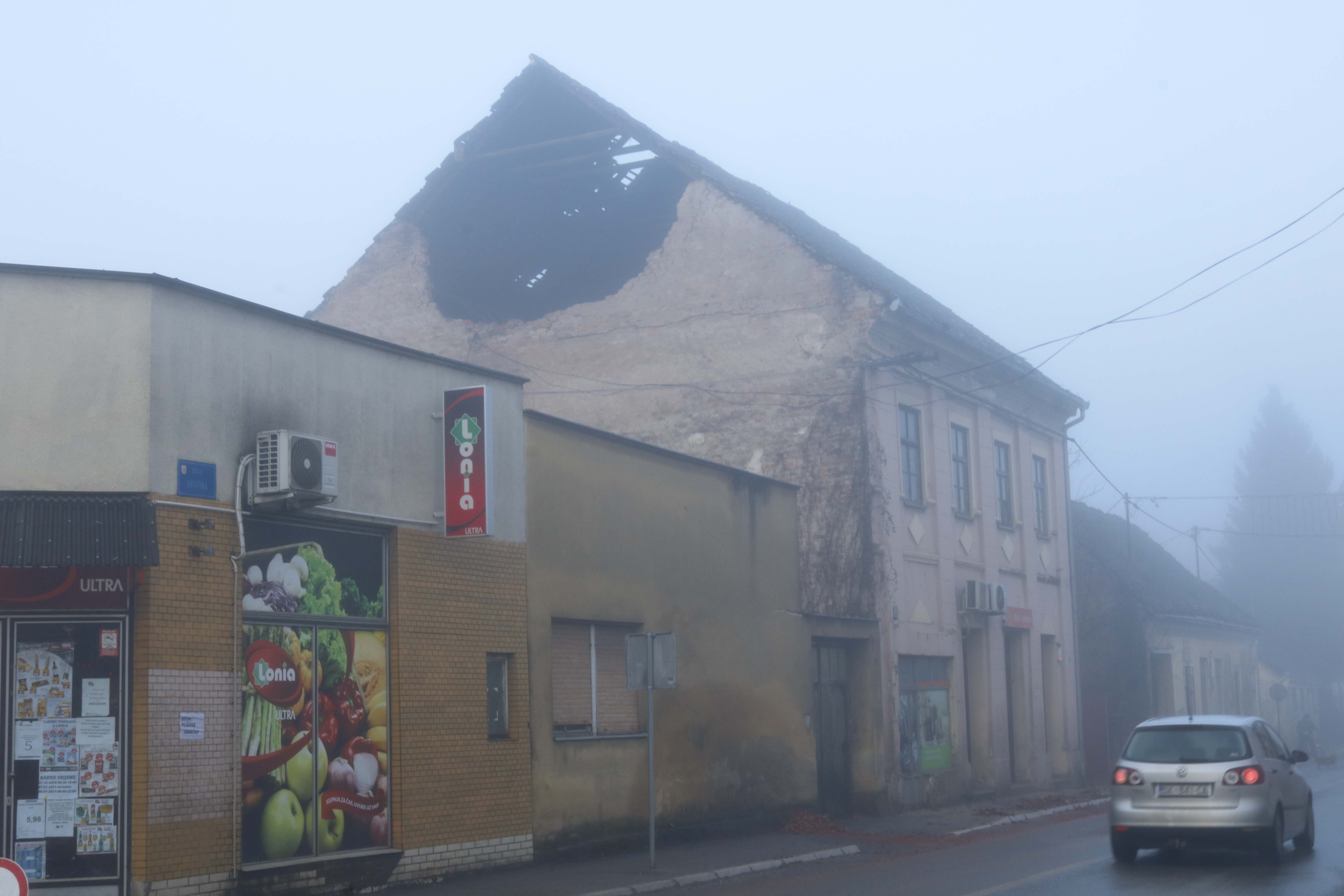
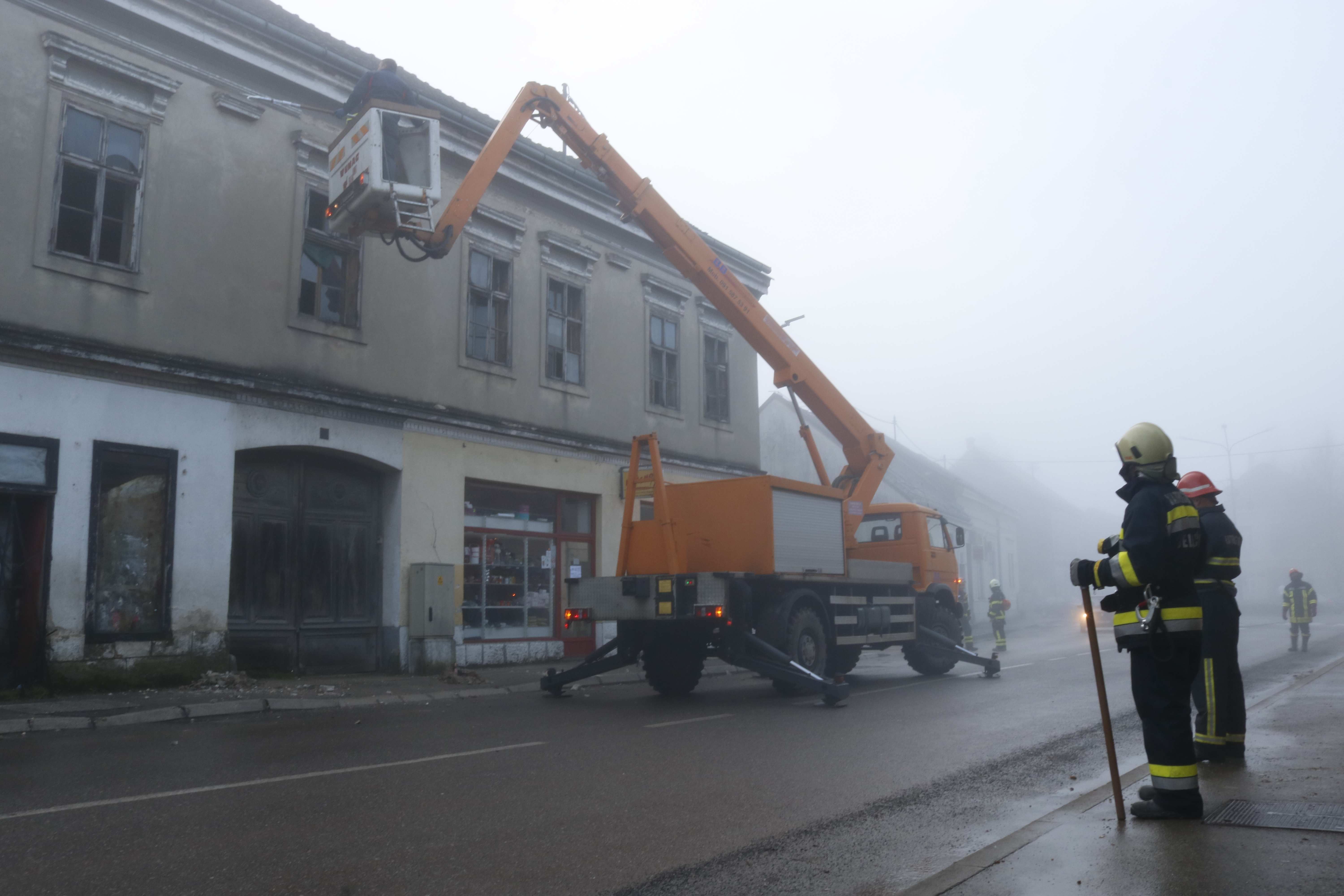
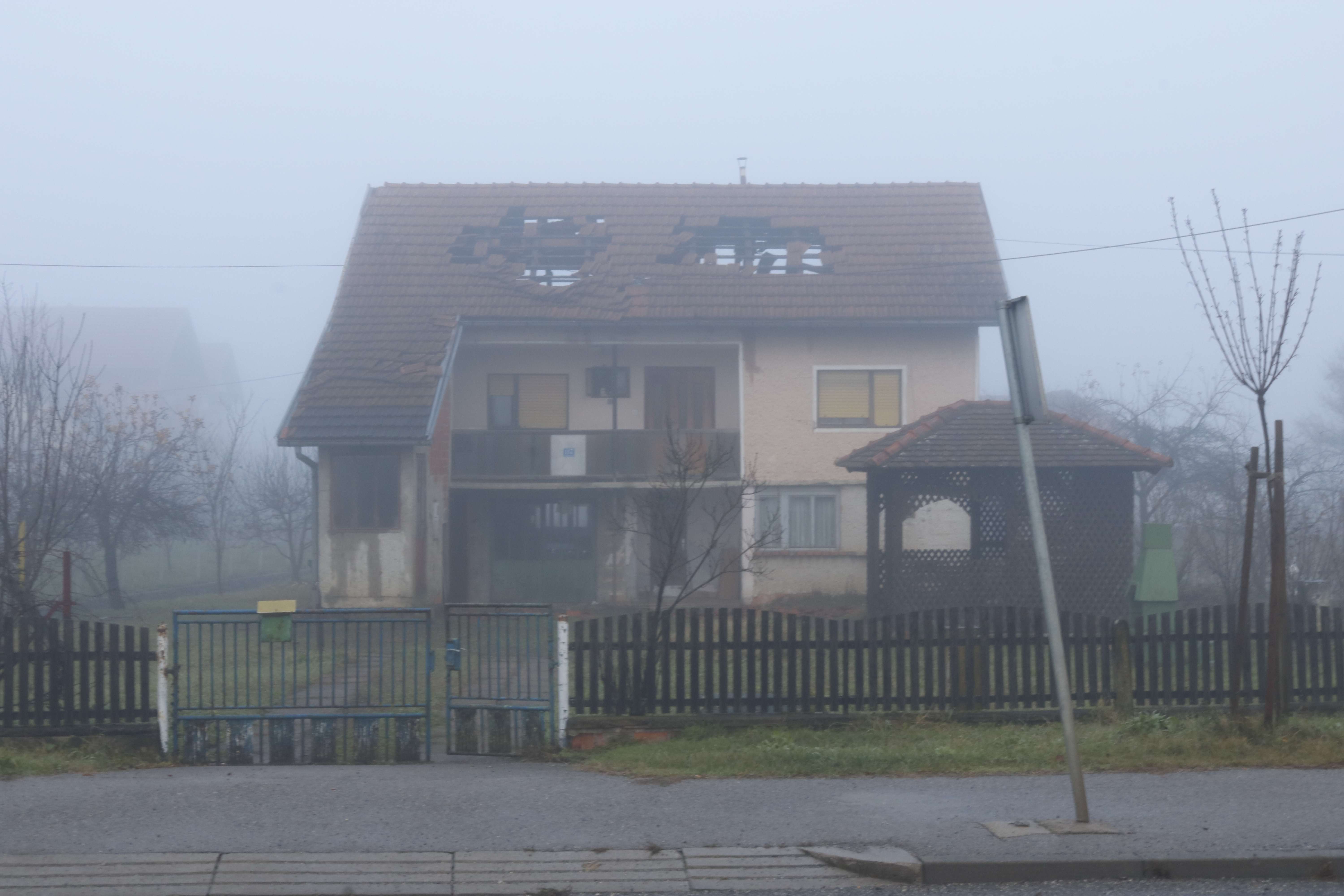
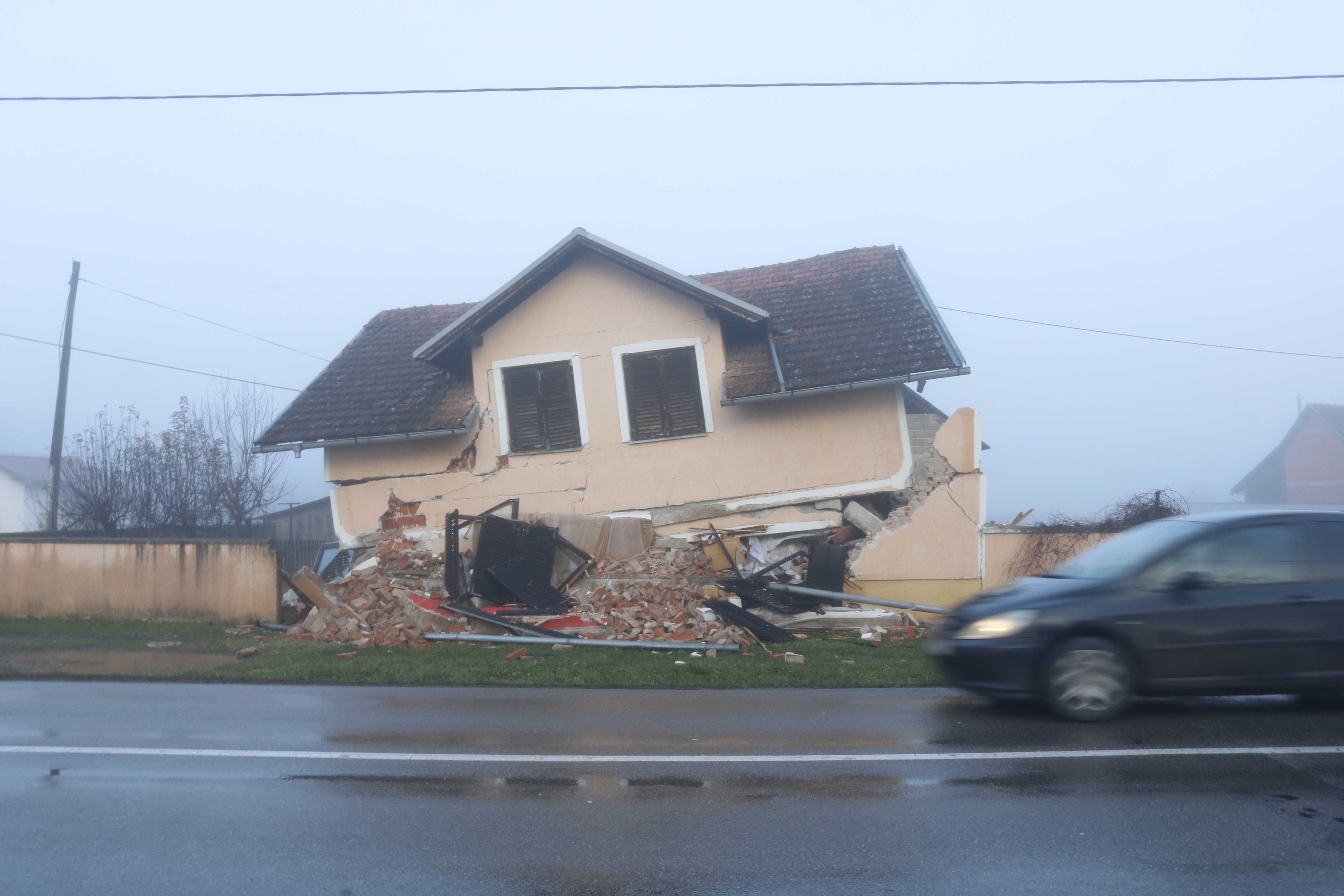
The entire upper floor of this house had collapsed, crushing completely the floor underneath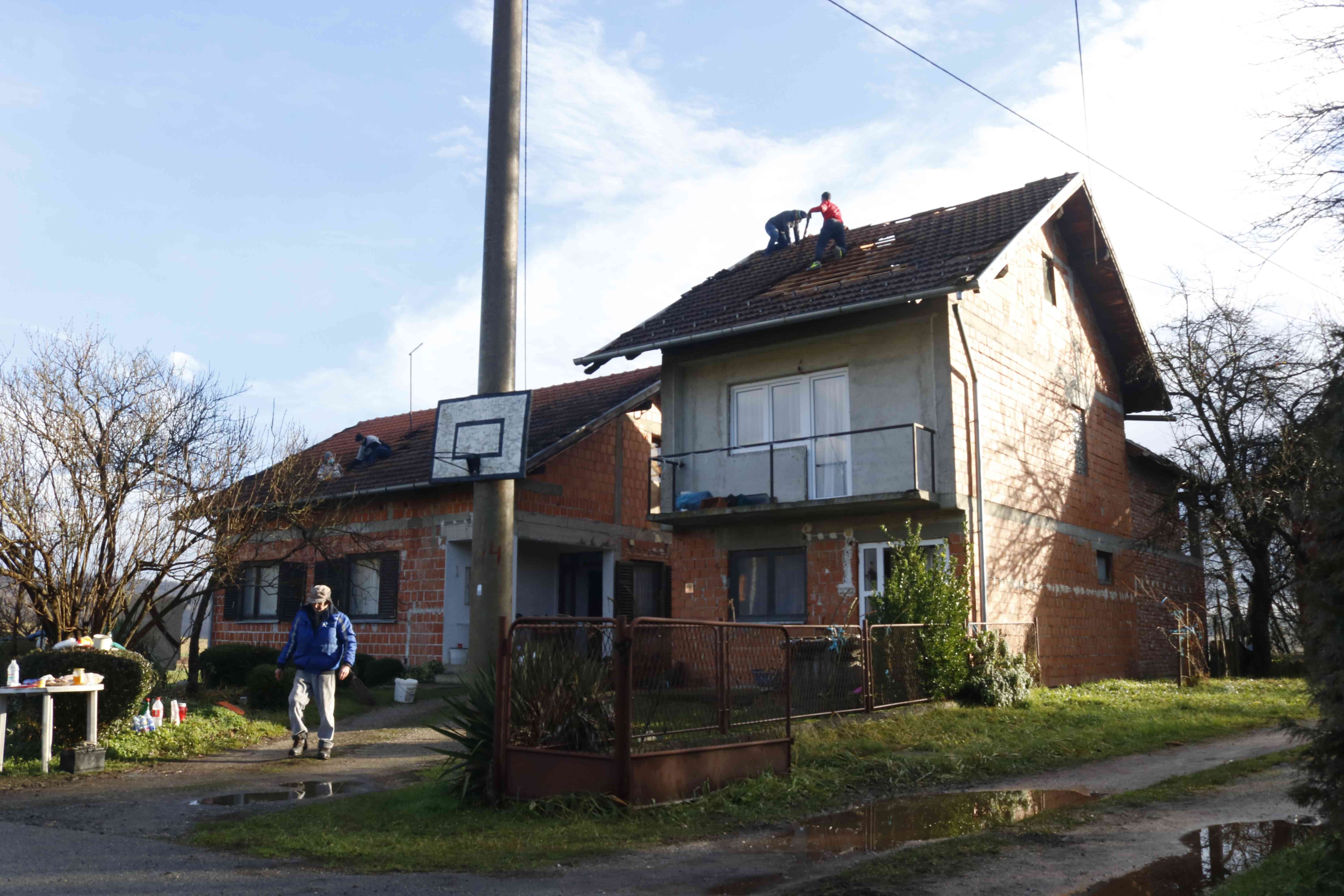
Volunteers at work on the roofs of two neighbouring houses, between Glina and Petrinja one day after the earthquake. The volunteers had come from all over Croatia
Petrinja one day after the earthquake

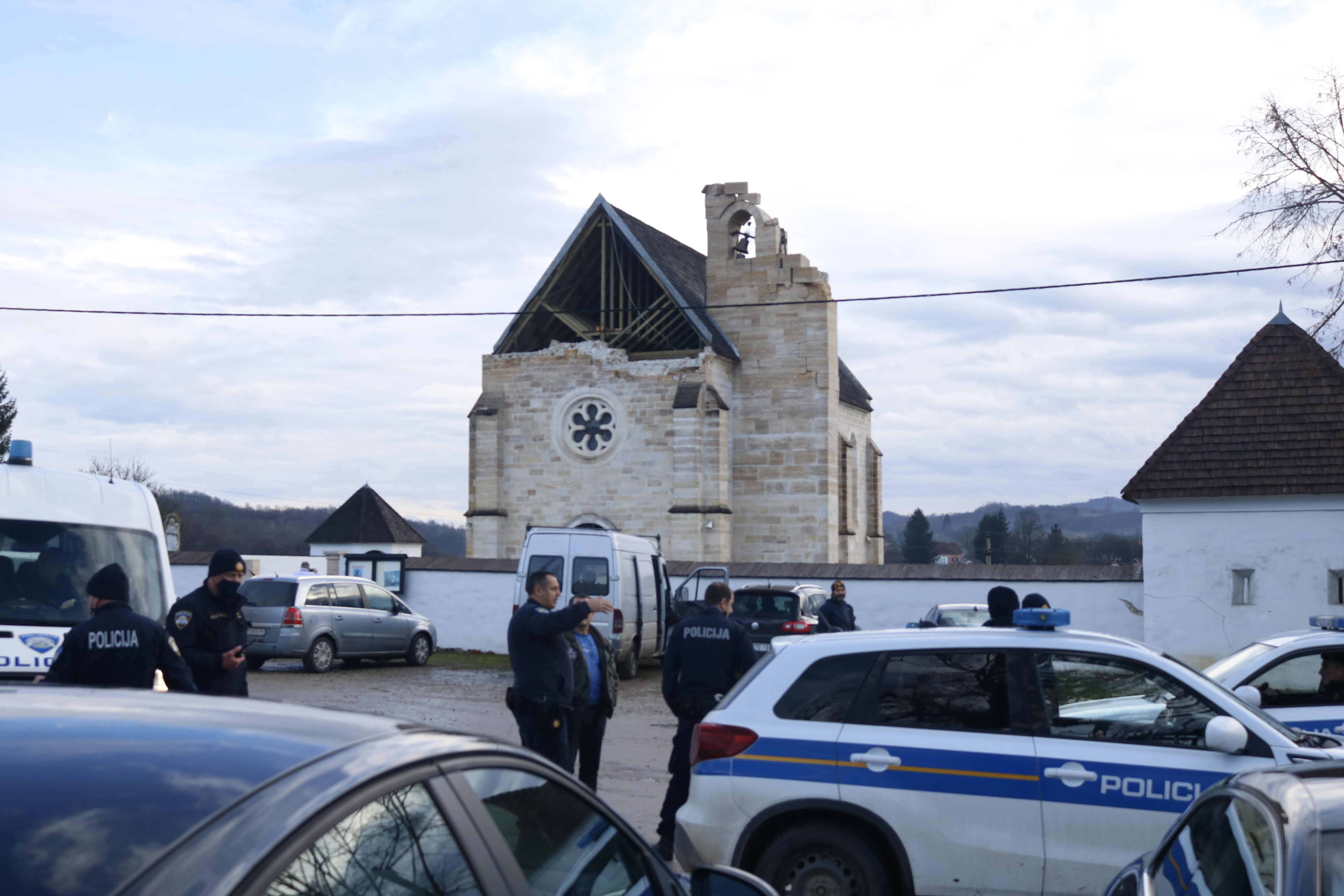
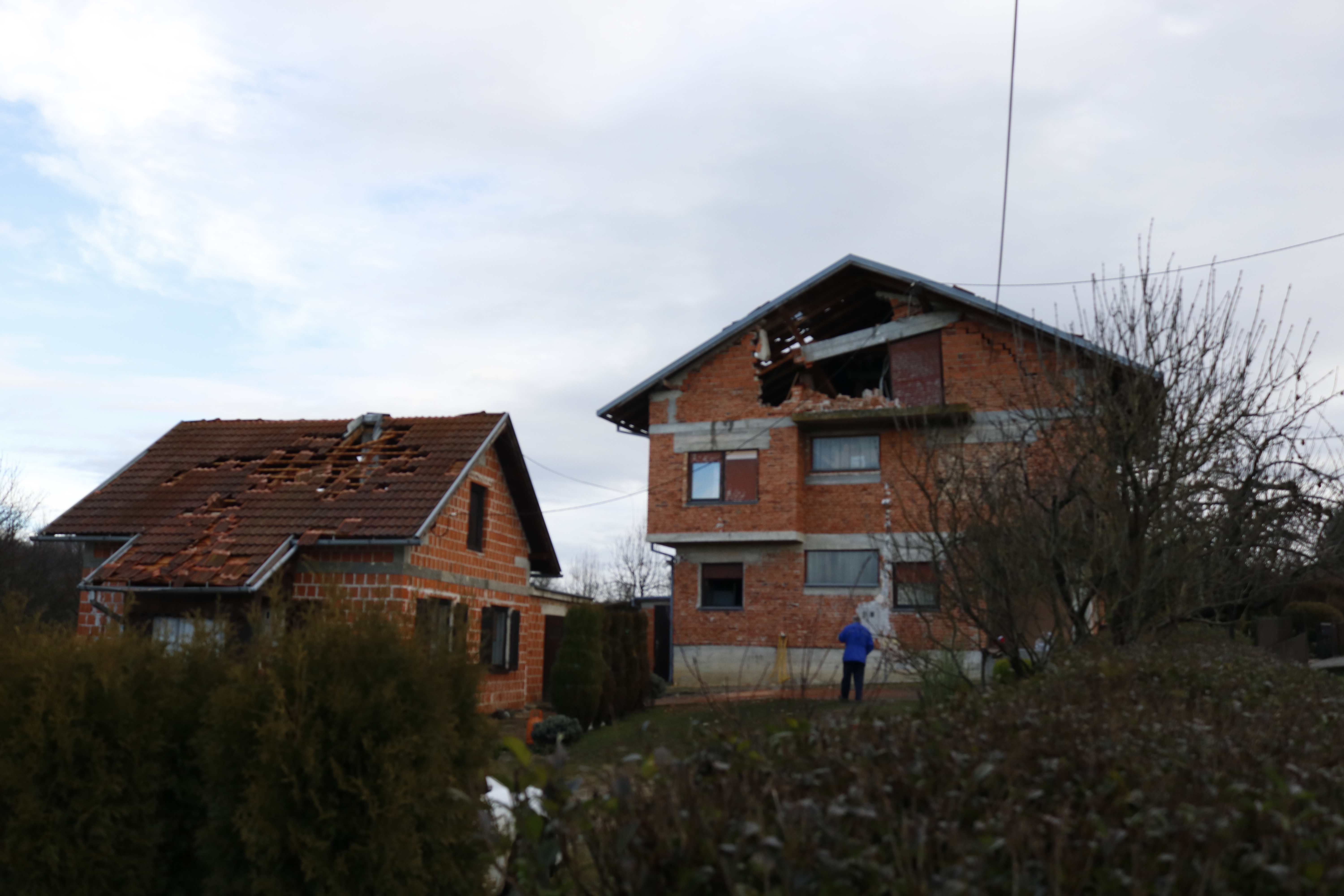
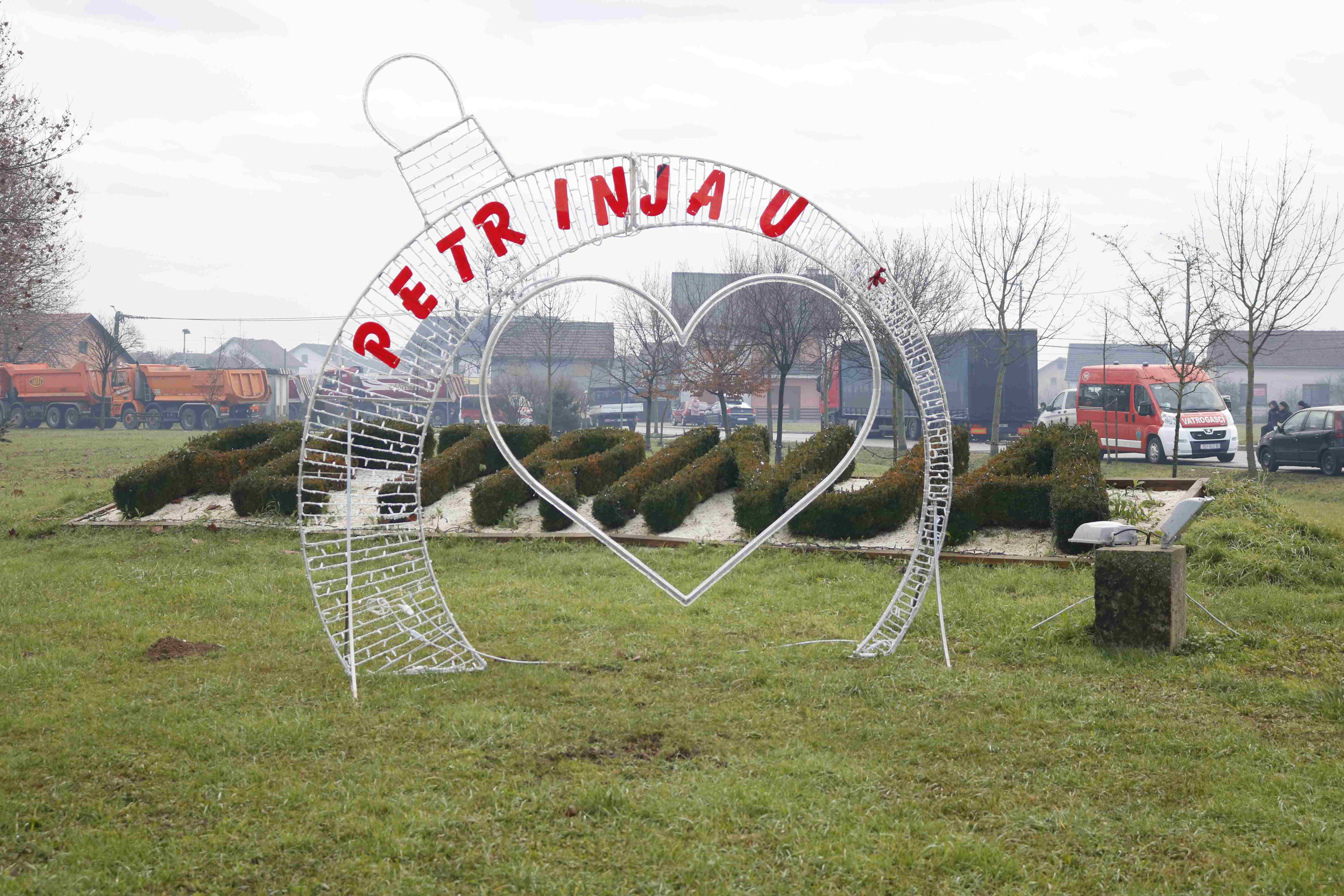
Even in the miserably wet winter weather, the greeting sign to Petrinja one day after the earthquake might still have looked cheery, if you couldn't see all the emergency vehicles in the background. 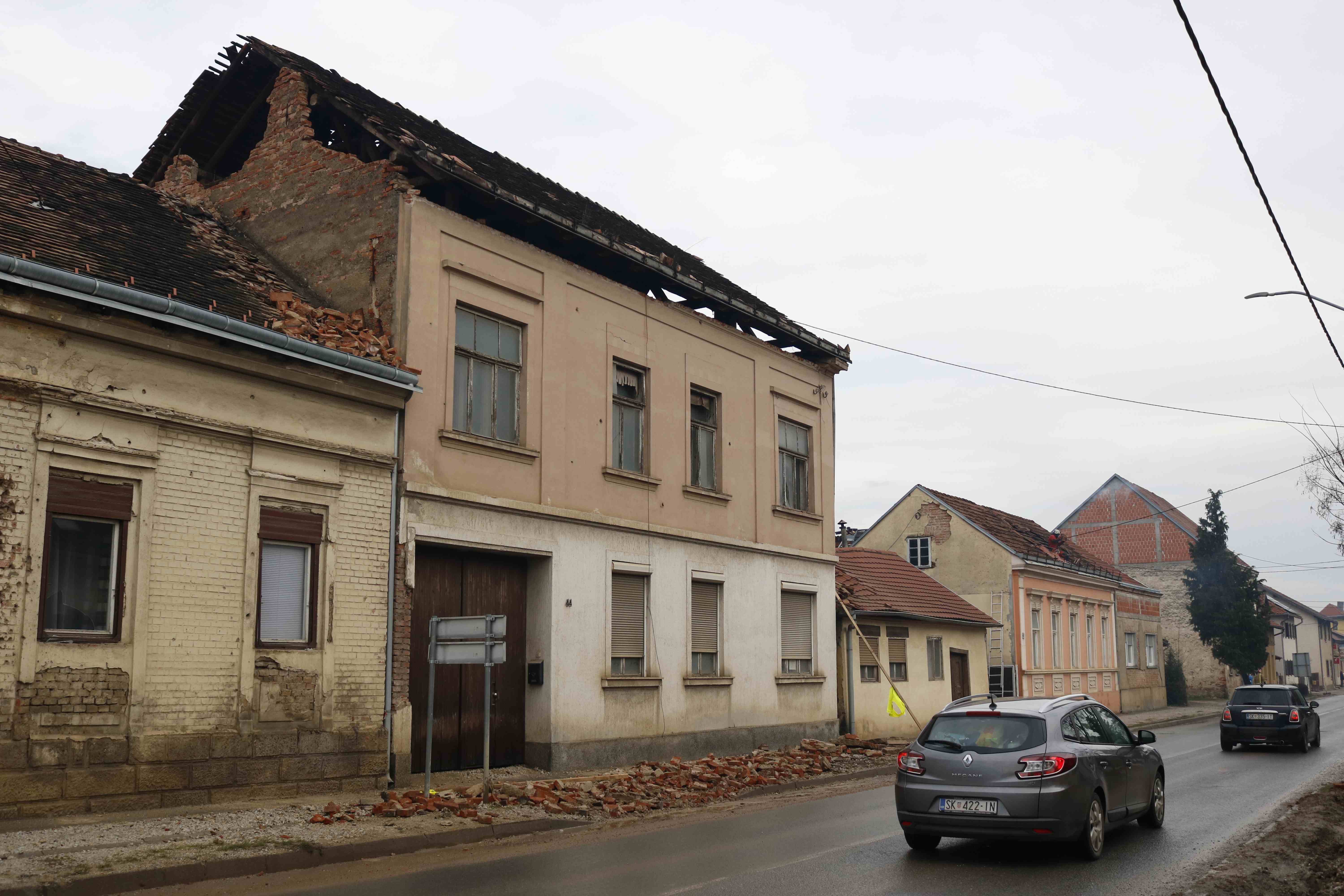
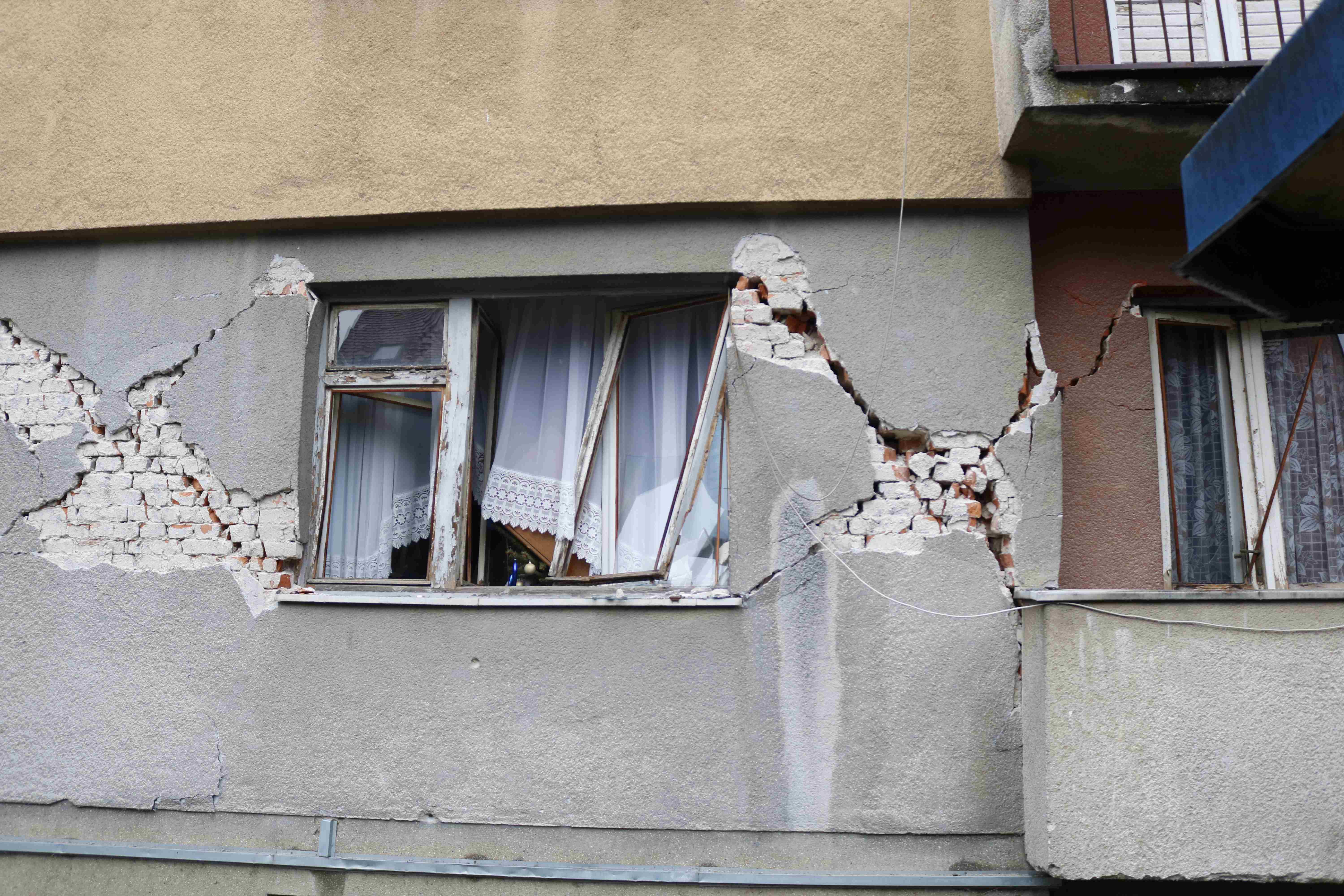
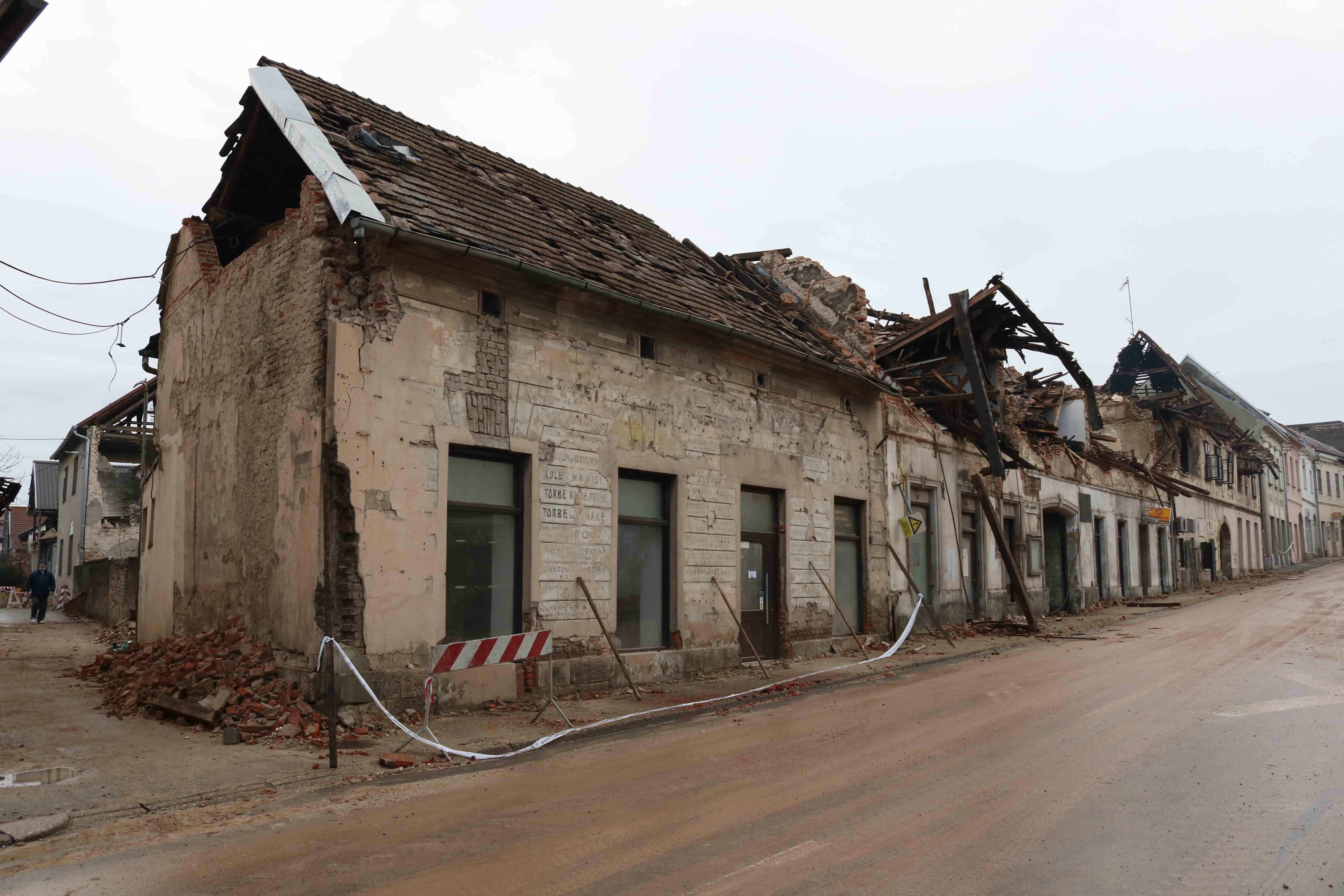
If you didn't know any better, these might look like damaged derelict buildings. But, 24 hours earlier, these had been a row of thriving storefronts, right in the centre of Petrinja one day after the earthquake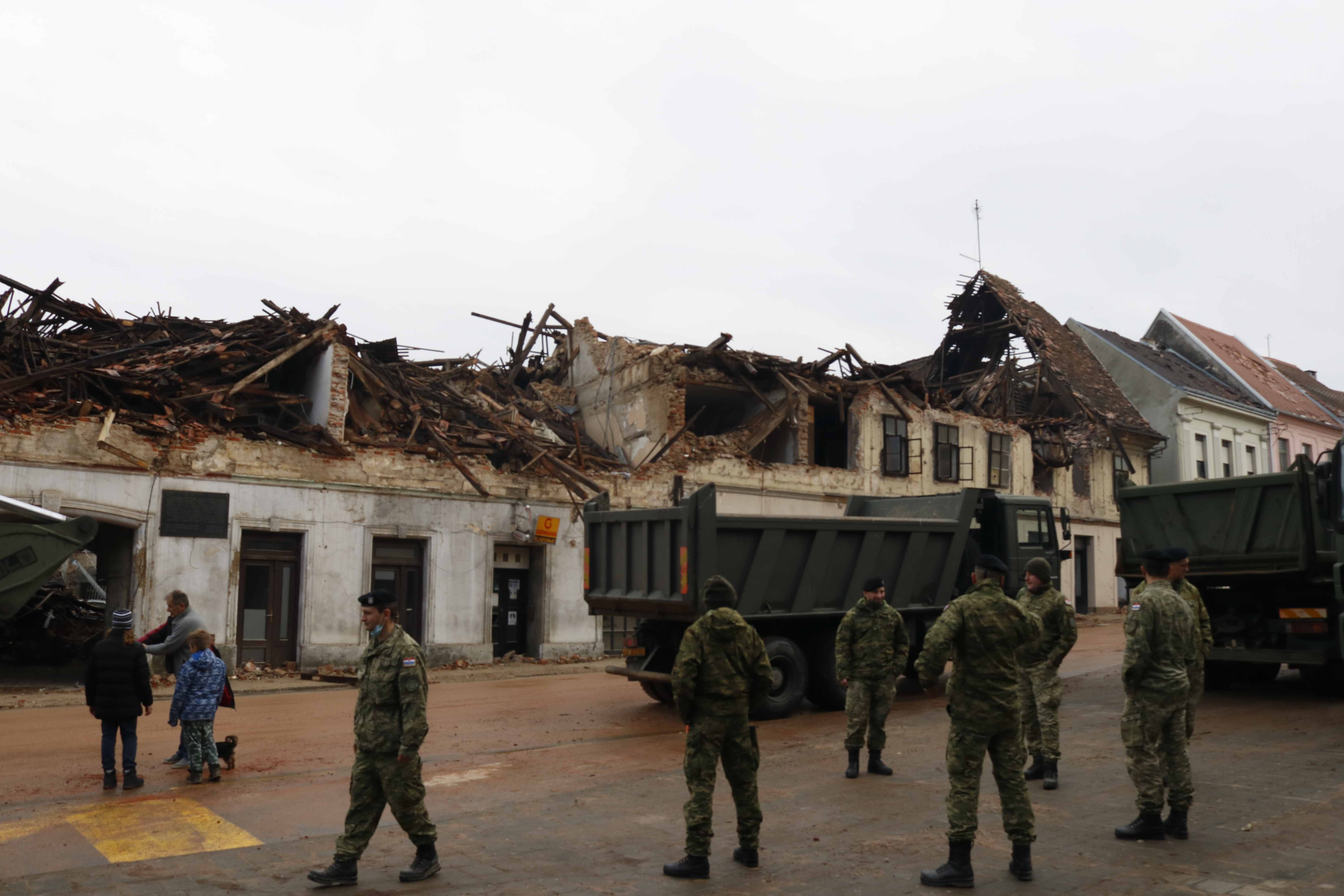
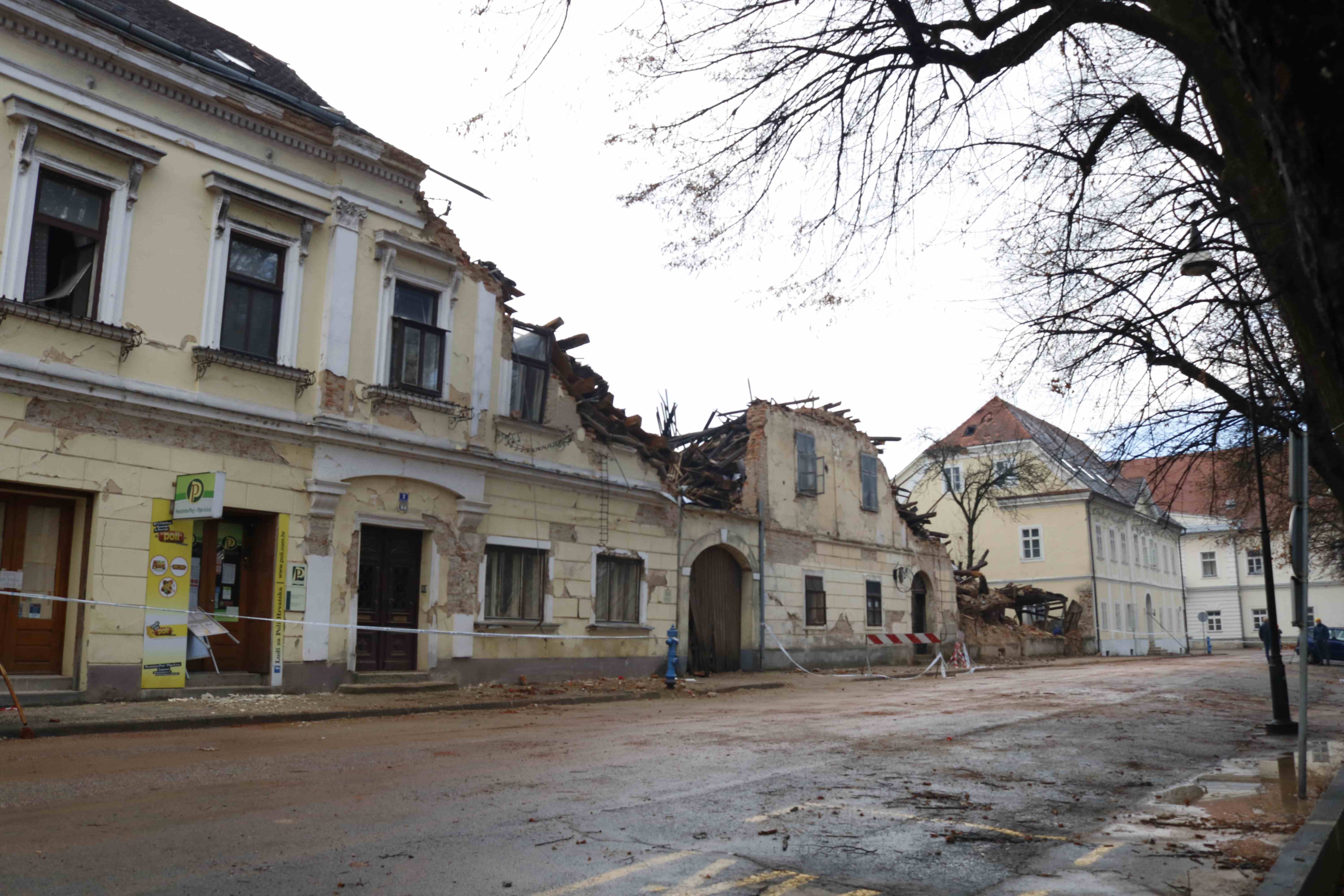
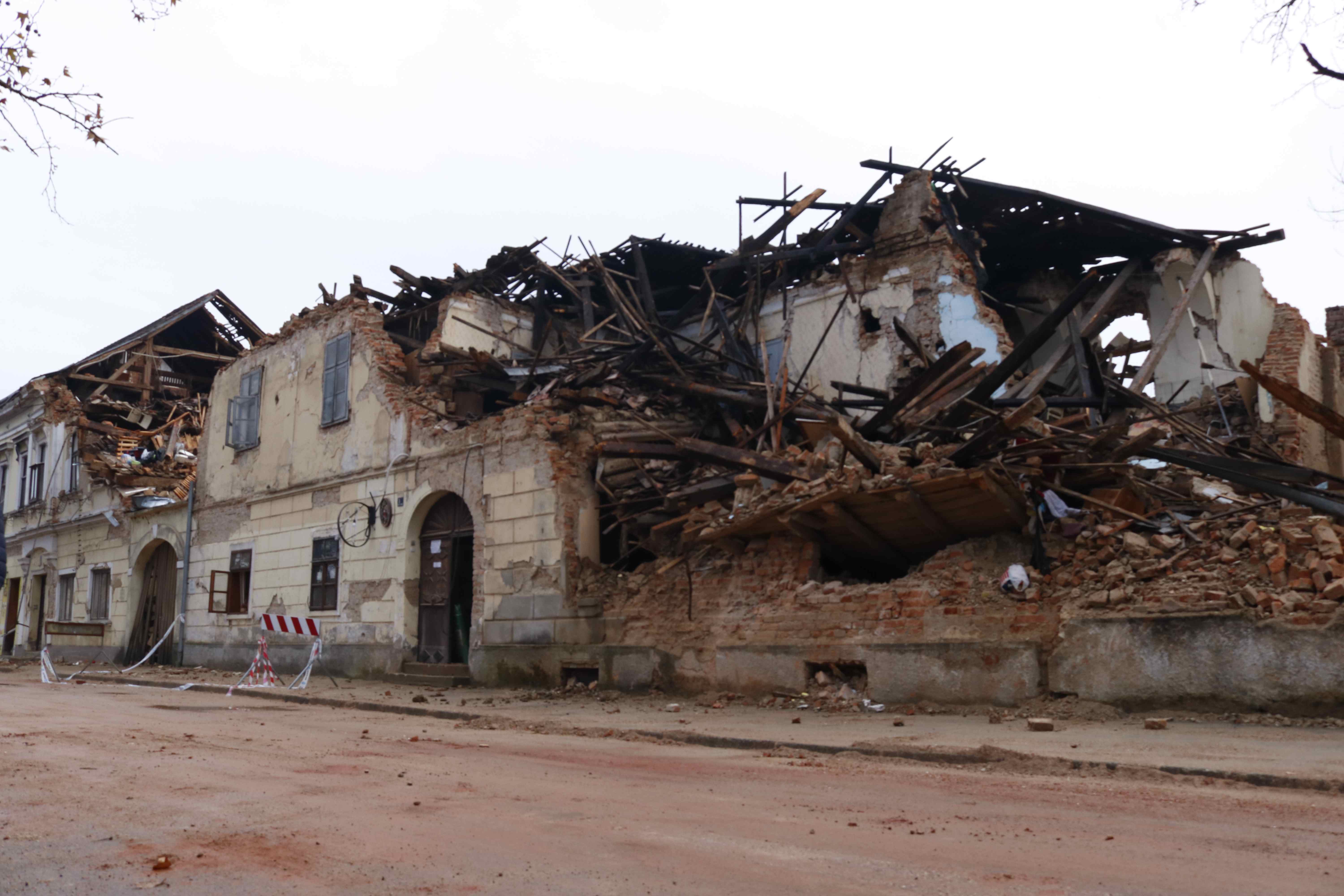
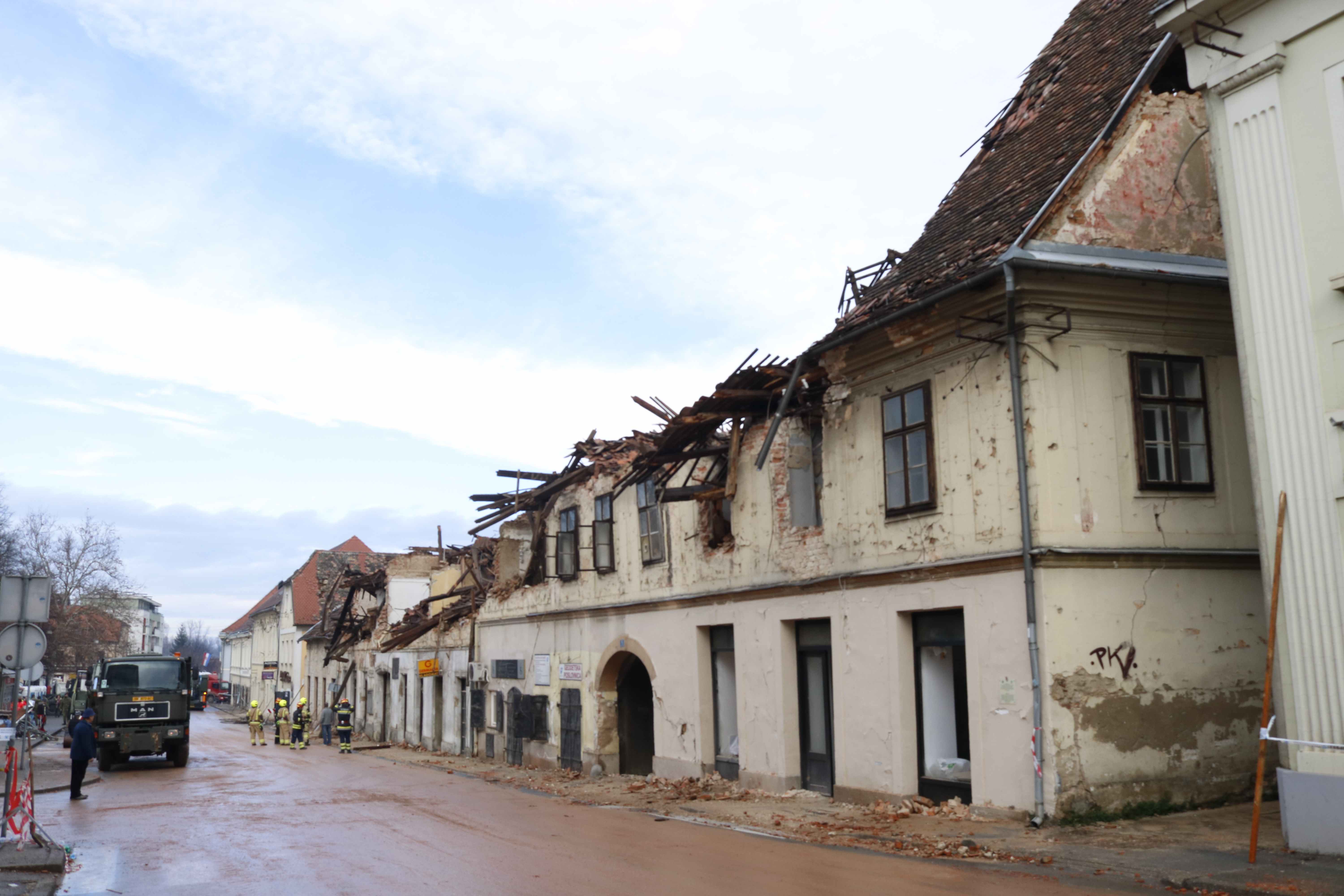
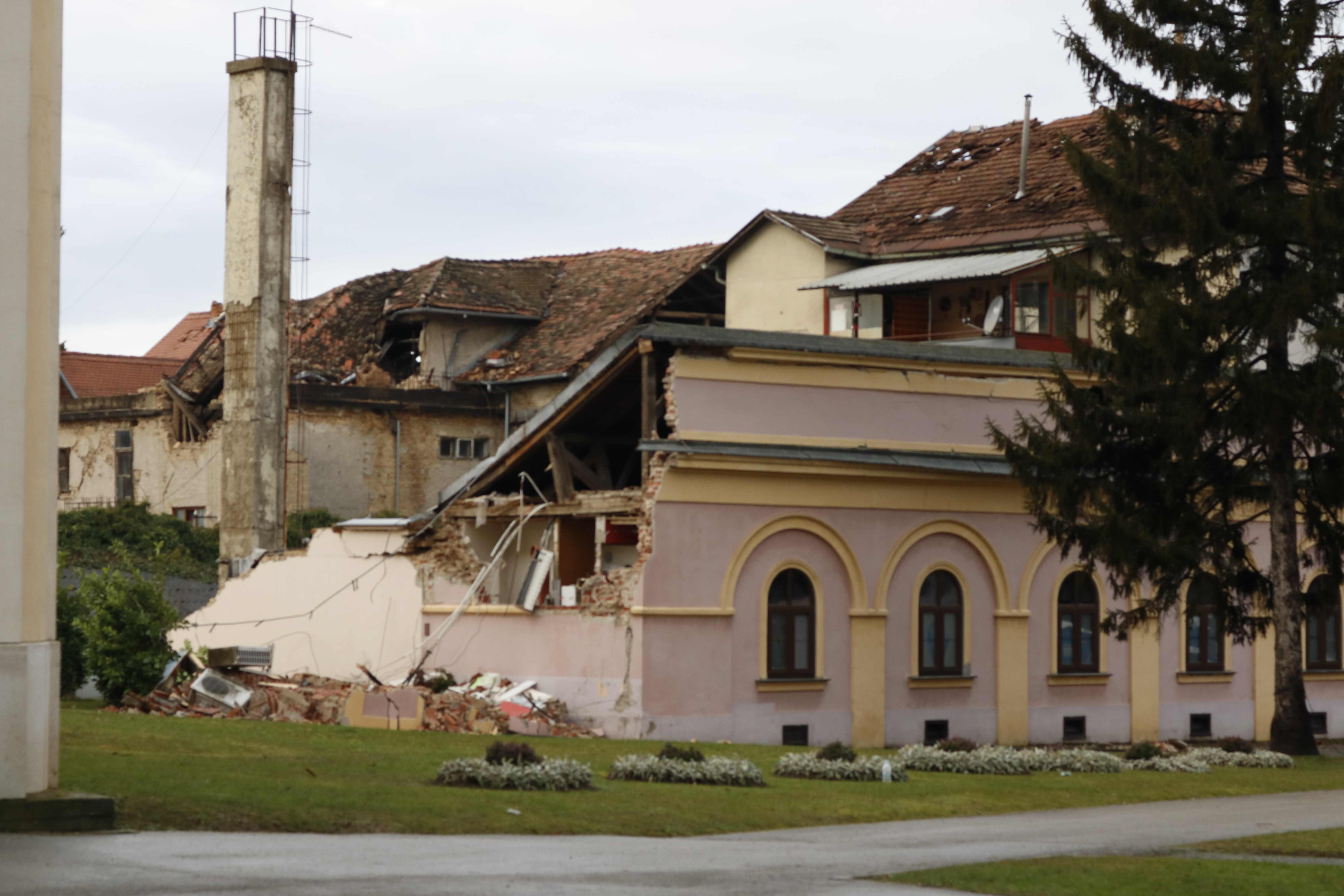
Sisak

Damage to the train station in Sisak. A considerably larger city than Petrinja one day after the earthquake, not one business we passed was working - no supermarkets, no fast-food restaurants. Nothing. Groups of teenagers roamed the streets with nothing to do and nowhere to go
Zazina

The Parish church of St. Nikola and Vida, Žažina near Petrinja one day after the earthquake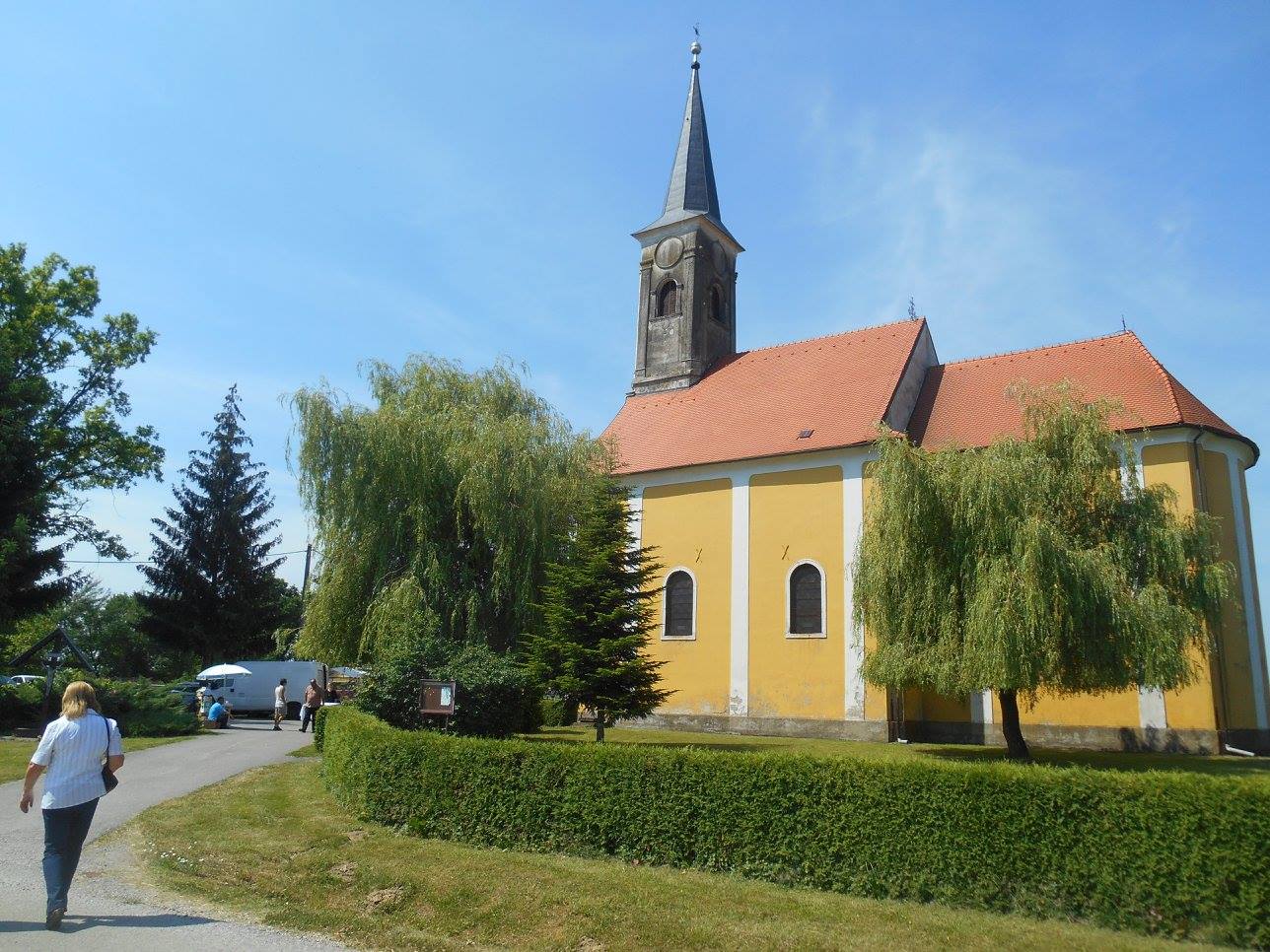
This is how the church had looked just one day earlier. A couple of metres from the church, remnants of the fire that parishioners had gathered around on Badnjak (Christmas Eve). We later learned that the church organist had been cleaning the organ when the earthquake struck, and tragically he was killed. 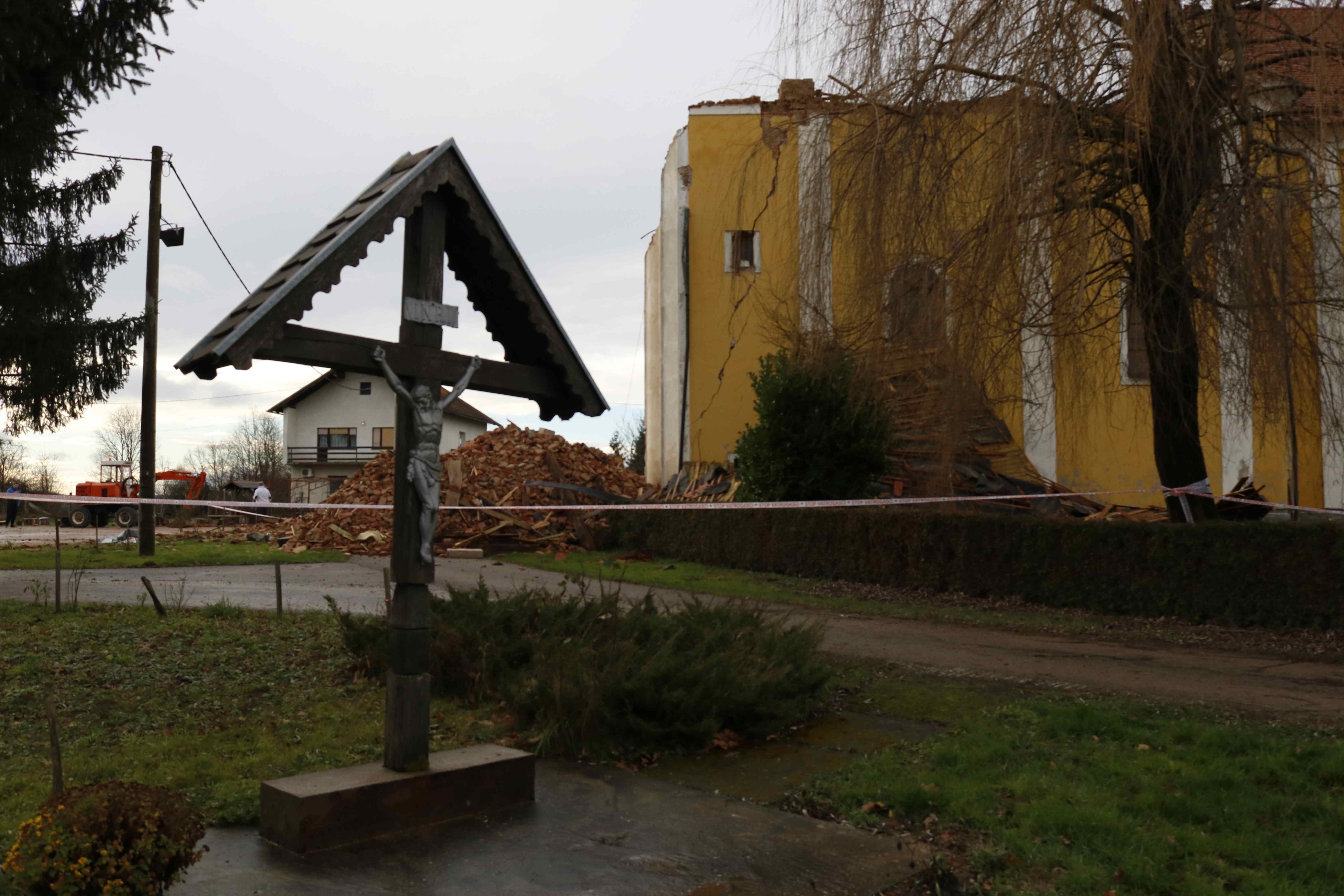
Photo of the Parish church of St. Nikola and Vida, Žažina courtesy of the church, all other photos © Marc Rowlands


